“Halfway house” is a term for the zone between prison and normal life and today at 1710 we passed the halfway house and are now closer to Cape Verde than GC. Only 429 nm to go. We are celebrating with one glass of red wine each, in leu of rum, as they did in the old days marine ships. On top, today has been named big shower day – first a dip in the cooling Atlantic sea and then a shower in fresh water. Yes I know – but out her, it is a treat.
We have a fantastic trip, the crew is enjoying themselves. We have entered into the phase where everybody can stand a single watch, which gives us all more time off. We enjoy great meals and the sun is shining. The first 24 hours we had a lot of wind and waves, then it was very satisfactory and now it is too little. And around 1600 hours today we were lying there – still in the water, only going up and down with the swell. So currently we are spending a few of the precious engine hours, hunting for more wind.
Position today is 22 deg 16 W and 019 deg 53 W, the wind is 5 kn from N and sog is 7.1 and cog is 233 deg.
Greetings from all of us.
Category: Uncategorised
250 nm south of Gran Canarie
The crew is doing well and adjusting to the life at sea – reading, playing games and relaxing. We have settled into the routines of the watch, sleep, and meal schedule. Today after lunch, the highlight of the day happened when 10-15 very playful dolphins joined our sail – playing around the bow of the boat and jumping out of the water. All man came on board regardless of naptime!
The rest of the passage is probably going to be slow according to the Grib files (weather files), yet very comfortable, as winds the last 12 hours have been 10-14 kn from behind, which converts into 5-6 kn of speed for North Star. The last 24 hours, we have only sailed 138 nm, which is slow for us. We still have 567 nm to go and a forecast which says 10-12 kn wind from N and NE, with moderate swells. But let us see how it develops. The weather is not easier to forecast out here than on dry land.
Position is 23 deg 49*N and 018 deg 07 W, SOG is 5.8 and COG is 240 deg.
Cape Verde 859 nm
Finally the dream could begin and we sailed out of Las Palmas. Music was playing on the pier, people were greeting us and then we were out at the starting line!Even though we have sailed nearly 5000 nm since we left Scandinavia, it feels thats this is the real beginning of the adventure. We are going to cross an ocean and arrive in St. Lucia 2900 nm away. Now it is night and full moon – it just came out of the clouds and make this a beautiful light night with stars and white capped waves all around us. We are sailing in 20-25 knots of NE wind and is 50 nm from the coast of Africa. The fantastic crew is in a great condition, of course some feels the effect of the first day at sea be we all adapt very quickly and find our sea legs. We are grateful that we have this opportunity to be out here, far from our usual lifestyle, pushing our personal borders. Our position is 26 deg 29′ N and 015 deg 24W – cog is 241 and sog is 8 kn. The wind is boisterous at NE 20-25 kn and we are sailing under the main.
Enjoy your day.
The crew of North Star
Just before departure to Cape Verde and St. Lucía
It is now nearly 2200 UTC in Las Palmas and the marina is getting quiet much earlier than the last few weeks. The parties are over and the reason why we are here is only 26 hours away. The boat has been pampered and prepared – food, drinks and vegetables are stowed away. The crew of Erik, Alex, Michaela, Marie and me have arrived and trained man over board. So now their is no excuse. We will leave tomorrow at 1300 UTC in 18-23 NE breeze and head towards Cape Verde, 850 nm south. We will update you everyday on this site and hopefully arrive next Friday.
Smiling greeting from the crew of North Star.
Sent on the road, so please excuse the grammar
Madeira to The Canaries, 265 nm
Madeira to The Canaries, 265 nm
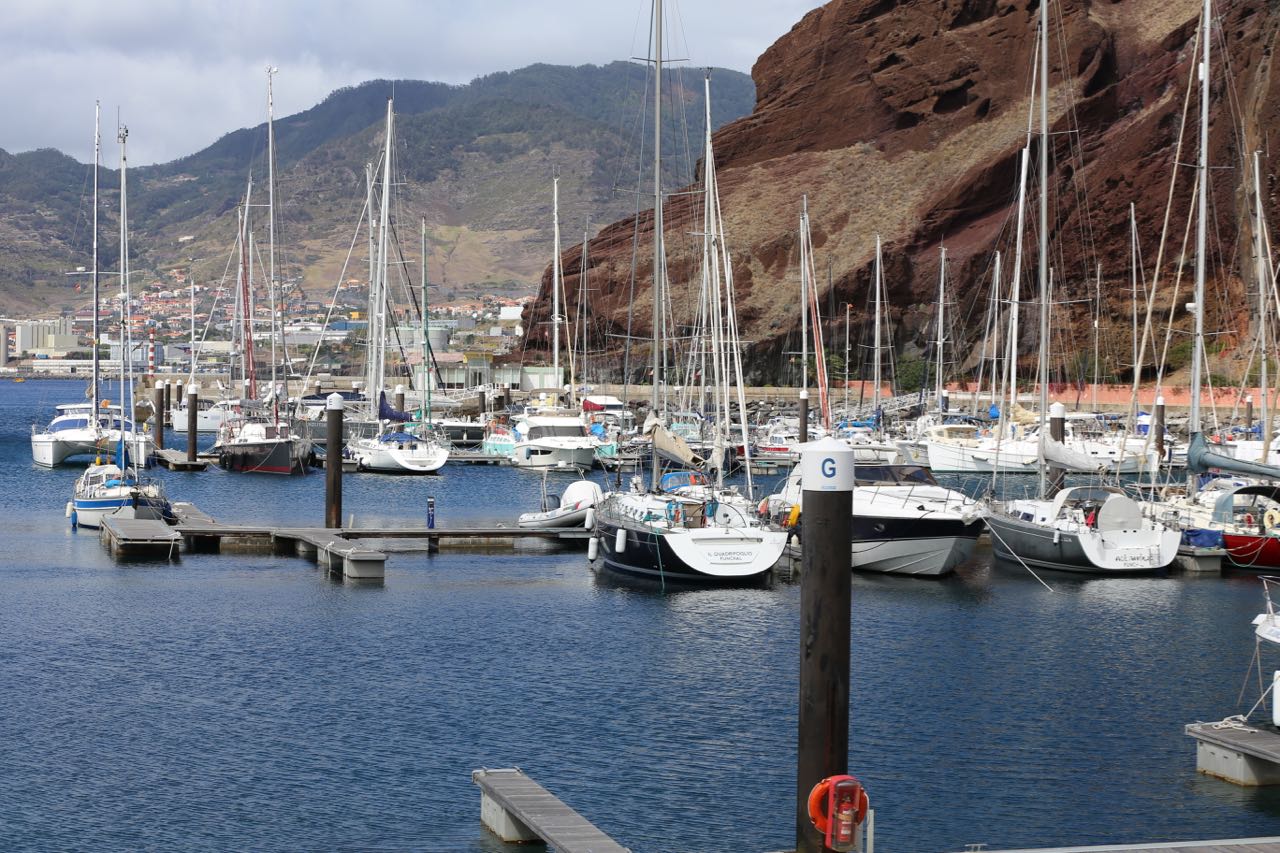 We arrived into Madeira in the pitch dark evening, after we had been racing to get their before darkness. It was not due to bad planning, that we arrived in the dark, but because we averaged 8.2 knot across from Gibraltar, instead of our planning speed of 6.5 knots. So after a reasonable tough crossing, the choice was to either spend another night at sea slowing down the boat to arrive in the morning or race and go in? We studied the maps very carefully and it was a relatively easy entrance into the marina – so we decided to give it a try with a nearby anchorage, as back up.
We arrived into Madeira in the pitch dark evening, after we had been racing to get their before darkness. It was not due to bad planning, that we arrived in the dark, but because we averaged 8.2 knot across from Gibraltar, instead of our planning speed of 6.5 knots. So after a reasonable tough crossing, the choice was to either spend another night at sea slowing down the boat to arrive in the morning or race and go in? We studied the maps very carefully and it was a relatively easy entrance into the marina – so we decided to give it a try with a nearby anchorage, as back up.
As you have guessed our entrance went well and the champagne was popped, just before we slept 12 hours.

For Marie the visit to Madeira had been on the agenda for a long time, so after the usual maintenance we rented a car and headed out to explore the island. It is a great place for hiking, a very flush and beautiful island, with a diverse nature. One day we walked in the volcanic center and the next day it was like hiking in a tropical jungle.
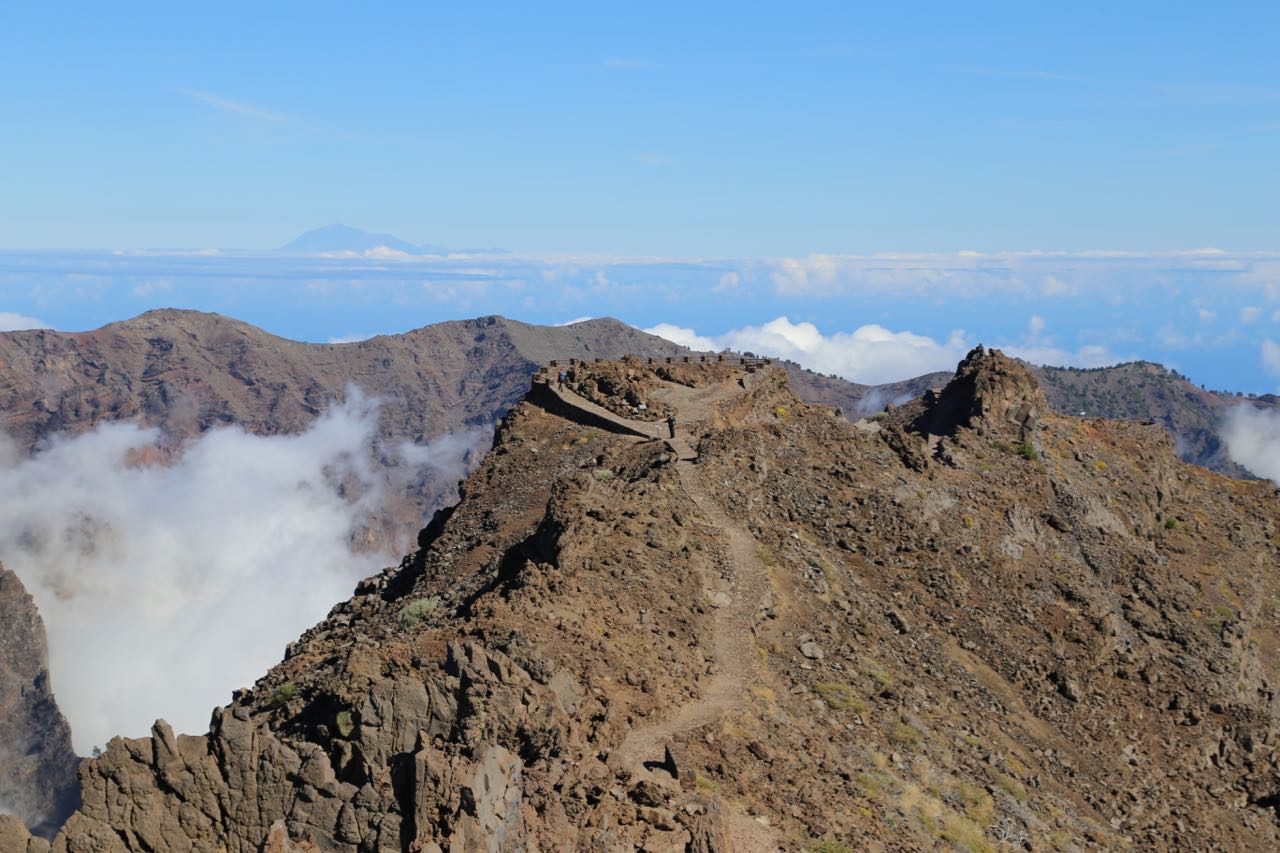

We were lucky to be invited to the fishermen’s celebration of Virgin Mary, where the village feasted for two days and at the culmination of this big party the fishing fleet sailed out to a small mountain where they went ashore and carried a statue of virgin Marie to the top of the mountain. These people live closed to the sea and their religion!
We did some beautiful hikes, we visited the capital Funchal, which really is an old Spanish settlement from the middle of the fifteen-hundred. We walked in the beautiful gardens saw the Catheral, the Castle and experienced our first island away from home!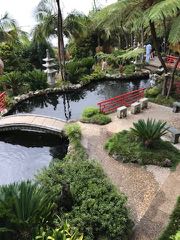
We did enjoy Madeira, but it is probably best to visit during the spring, with the flowers in full bloom, but on the other hand it was never very crowded.
Our designated Marina, Quinta dos Lorde is a great marina. It is a very personal place, as it belongs to a hotel resort where you are treated as a guest of the resort. It is smallish, but they still have room for bigger boats. The resort can arrange car hire, tours, shopping and more, as part of their services.
The week before we arrived into the marina it was haunted by big swells, but when we stayed their it was very calm. It is although a learning that as soon as we arrived to these mid atlantic island, everybody are more focused on the mooring lines and their flexibility than we have needed before, because it quickly gets rough, also in the harbours. Before we left we had to visit Henriques and Henriques a famous Madeira producer where you can be educated.

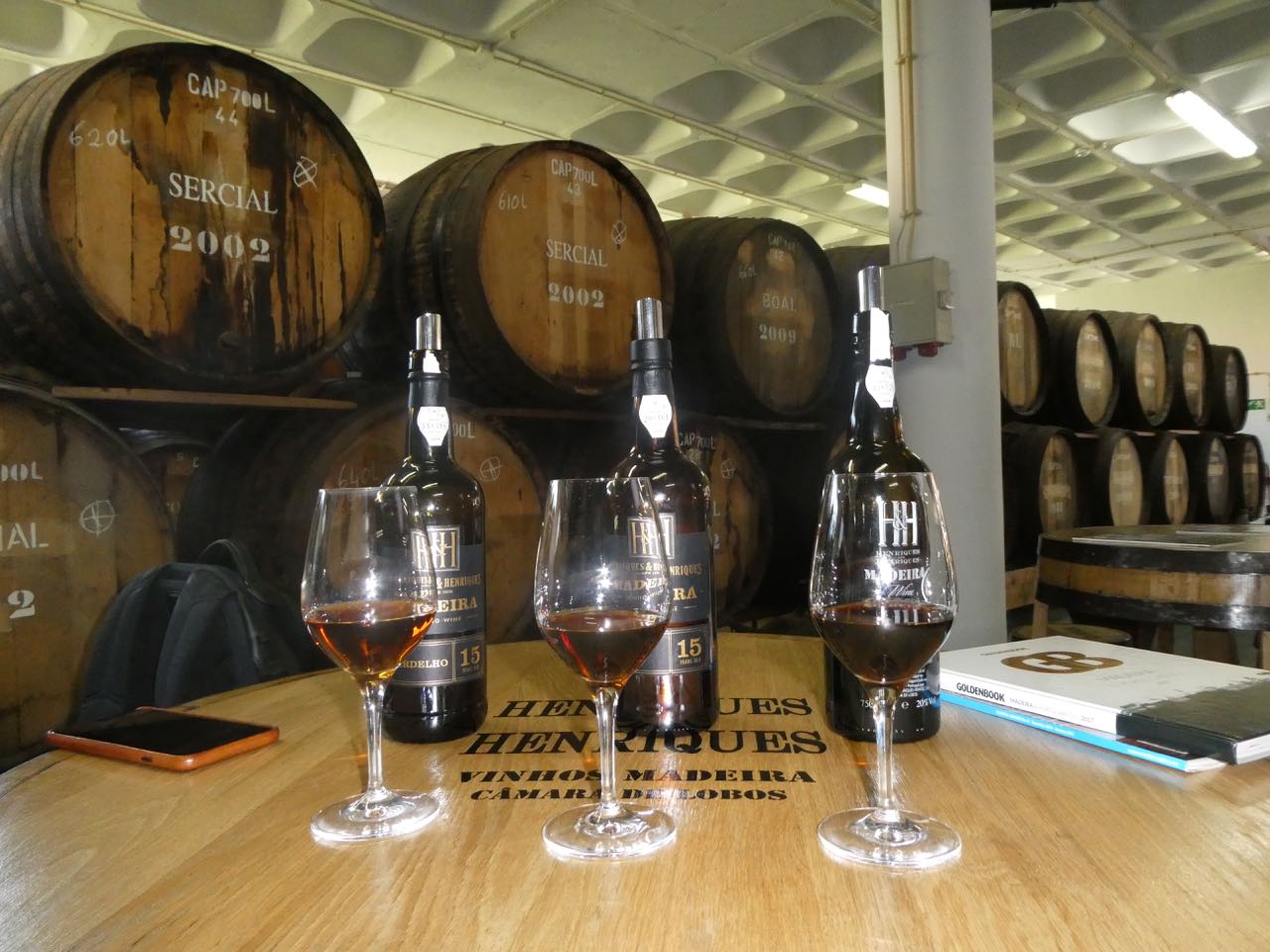
Thursday morning we departed, to sail the 265 nm to La Palma, the most westerly of the Canary Island.
Sometimes the weather throws you a curveball and sometimes it is just perfect and this sail was just that – 8-9 knots with a 15 kn beam reach with 2-3 meter waves and we were flying – arriving friday late afternoon. I wish it was always that great! The wind were warm and smooth taking care of us and even the dolphins were out to play with us. But we are following in experienced sailors wake, as you can see Nordkaperen were there before us…
We had decided for the most easterly marina, Santa Cruz de La Palma, where they had reserved a berth in a very empty marina and in the far end of a cruise ship pontoon. It is a good Marina, it is rather new and well maintained and I believe they are building a gate to the marina, hoping this will control the swells a little better, than when we visited. We had a small blow from NE and the marina became quickly windy and uncomfortable.
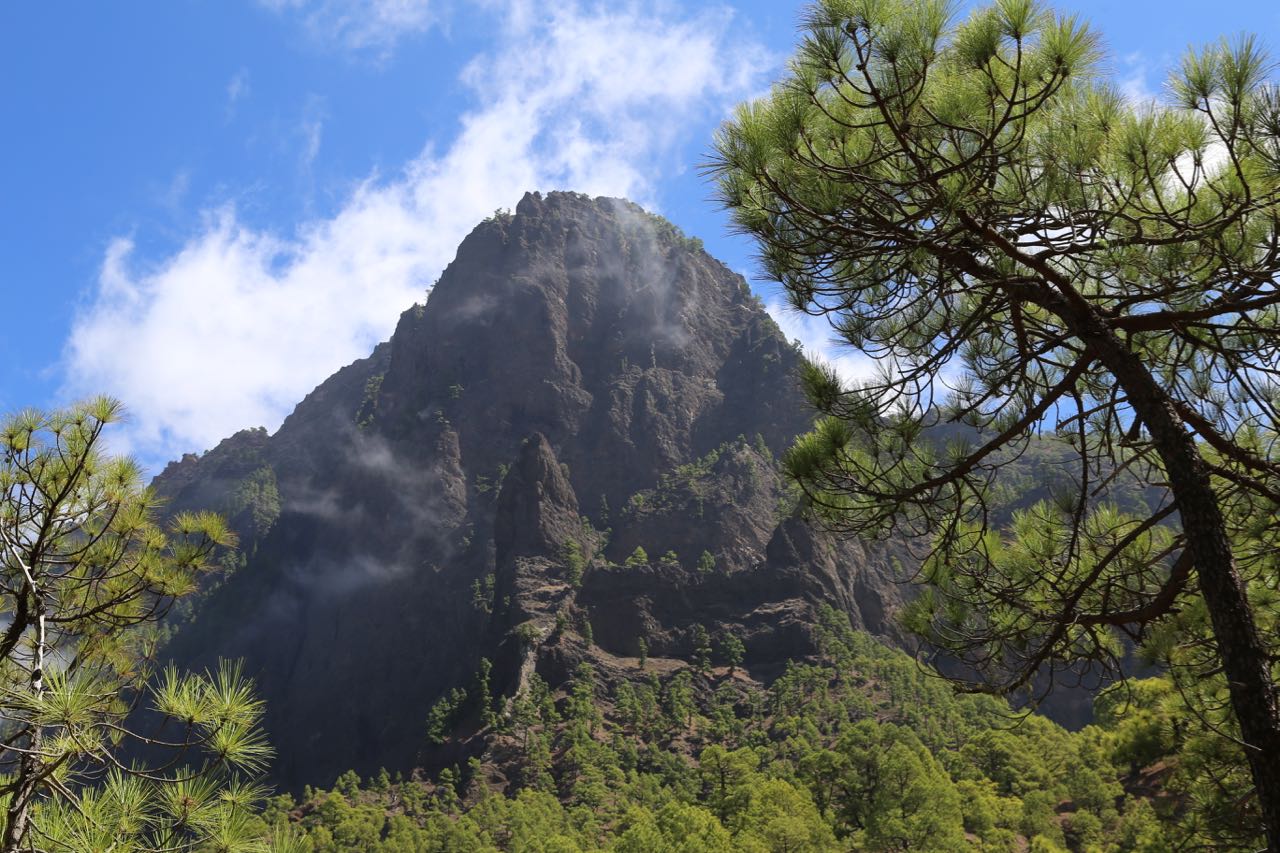
But the island is fantastic – the volcanos and the tropical rainforest is undisturbed and it is a must to experience, before the island is discovered. Both the center of the island where we hiked and the southern part of the island where you can see a volcano which were active as late as 1971, was magnificent. For us La Palma over shadow Madeira, and we enjoyed our stay in this small unspoiled paradis.
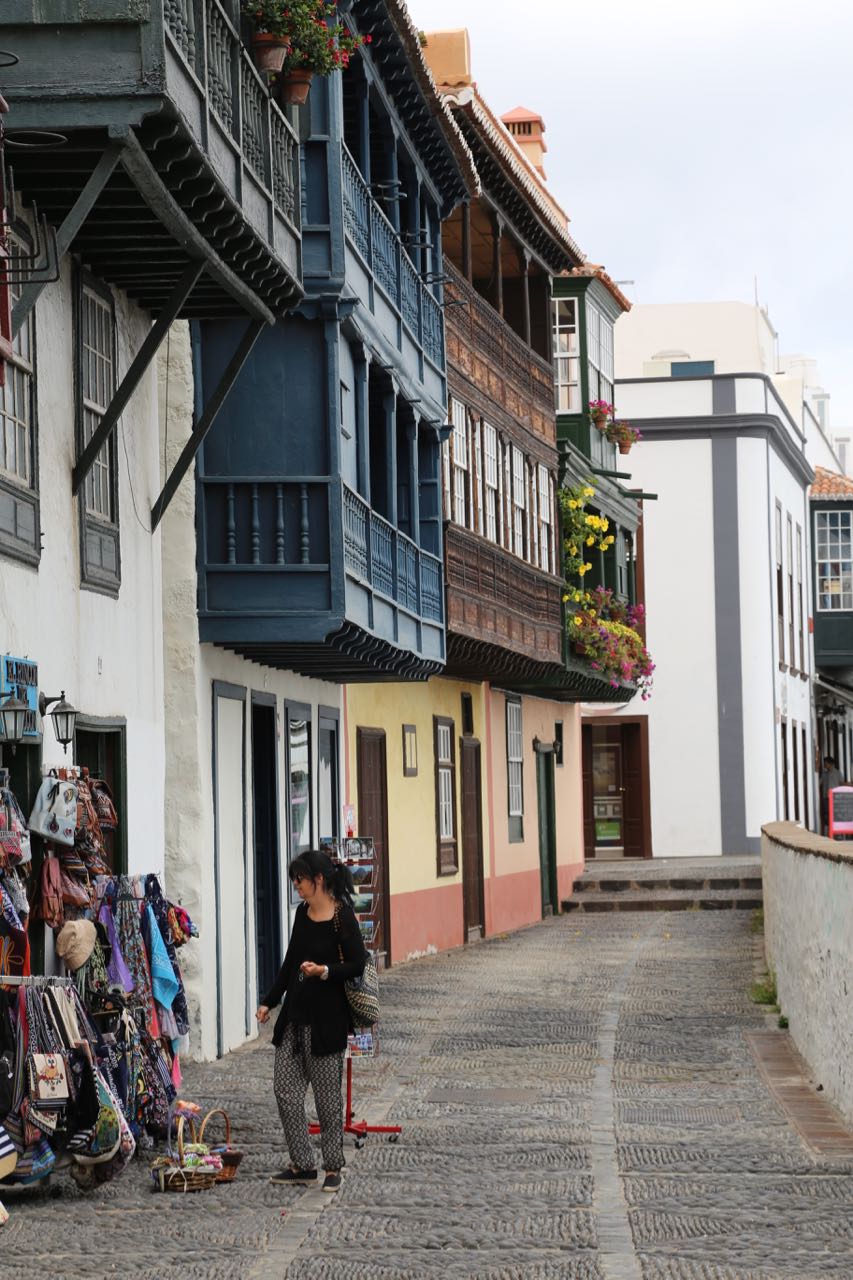

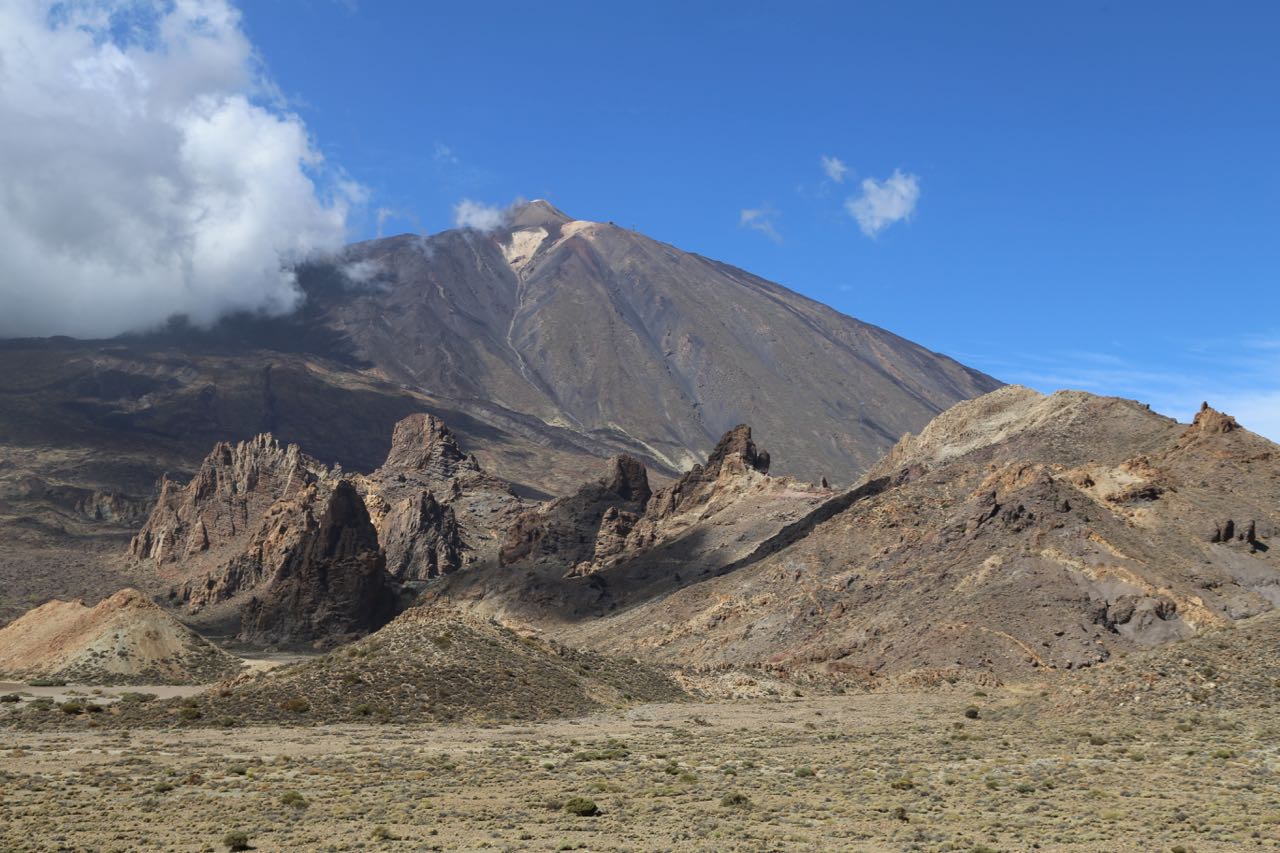
Next stop was the highly recommended La Gomera, where we had planned to spend a short week, before departing for Gran Canary and Las Palmas, from where the ARC+ starts. Unfortunately a spell of wind from the wrong direction spoiled our plans, and we sailed to Santa Cruz de Tenerife. As one of our friends recently wrote, all sailing plans should be written with a pencil – this is indeed through and one of many reasons why this life is fantastic.
Teneriefe was a great positive surprise. Visiting an island in the middle of the ocean with a nearly 3000

meter high volcano, is speciel. We drove up into the natural reservation area and tried to climb to the top, but unfortunately with no luck as this was only for people with pre booked tickets. Instead we drove and hiked the park and had a fantastic day, experiencing what a volcano can do the nature.
At the end of the day our rented car gave up and we were suddenly stranded in the middle of nowhere with no cell phone coverage. Fortunately there were nice people passing by and in a couple of ours the cars had been replaced.
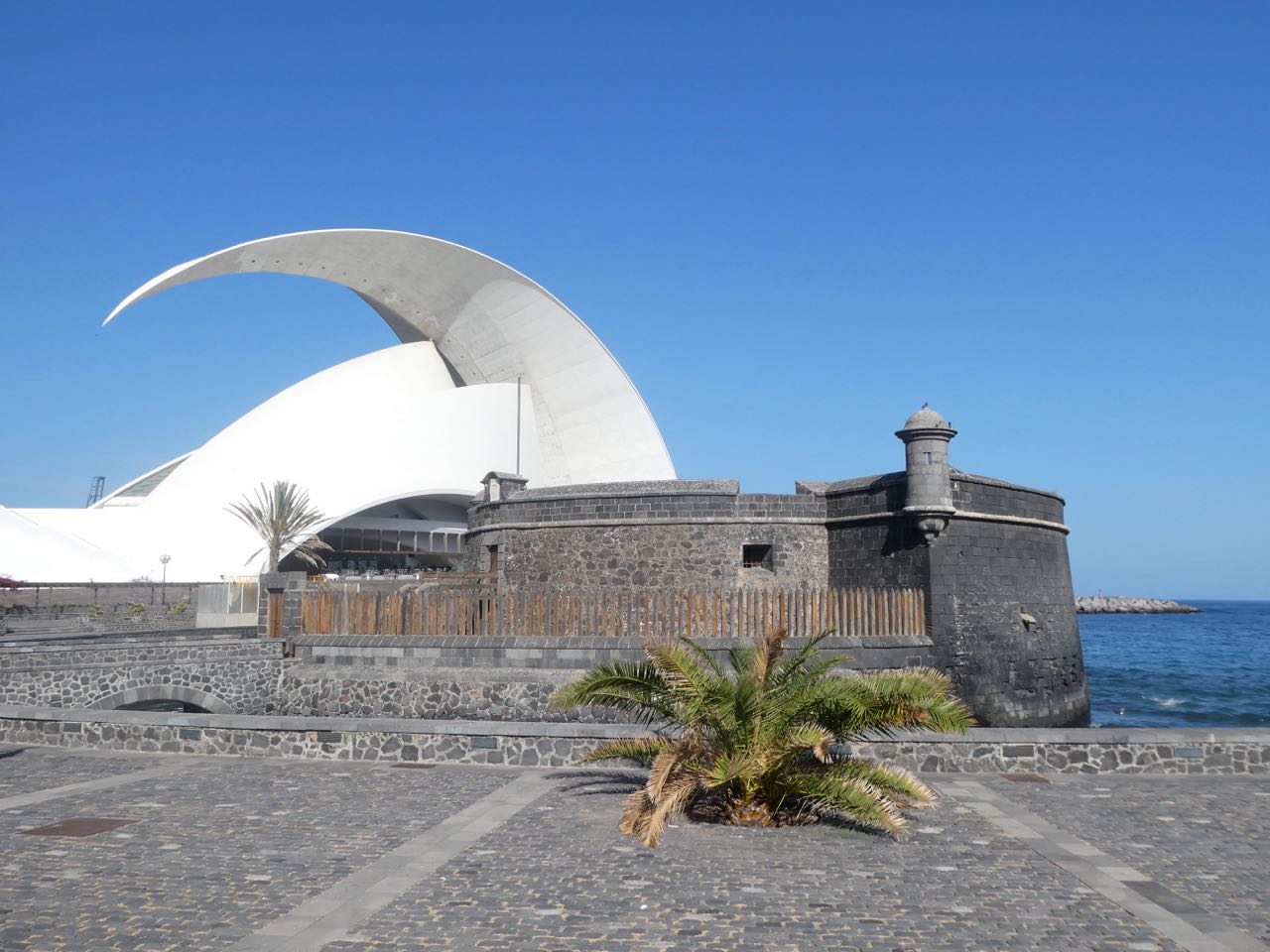
We also visited the new opera house which has a lot in common with the sydney opera house and the fortress built by Lord Nelson. Yes, he was also here, but somewhat earlier than us.
Next stop Gran Canaria and four weeks of preparations for the ARC+.
From Mallorca to Madeira – 1100 nm
Mid August it was time to leave the Balearic Islands behind and head south. We left together with another sailboat from Sweden, Loma 4, which was crewed by a Swedish/Danish couple and of course we did hang out. Together we sailed to the northern part of Ibiza in soggy wind and confused seas, but arrived with the last light to Cala de Portinax at 39 deg 06N 1 deg 30E, which is well protected and offer good views and a few locale restaurants.
Early the following morning, we sailed towards the Spanish mainland and further. It was a nice sail, but one of these days, where the wind was changing and the boat never really sailed very well, even though we adapted sails constantly. The following day was the first day we hoisted our new 180 sm2 Danish flag – our new “genakker” from UK Sails. ( A sail made for downwind sailing in light winds ) A beautiful sight and Marie did make a video on Facebook.
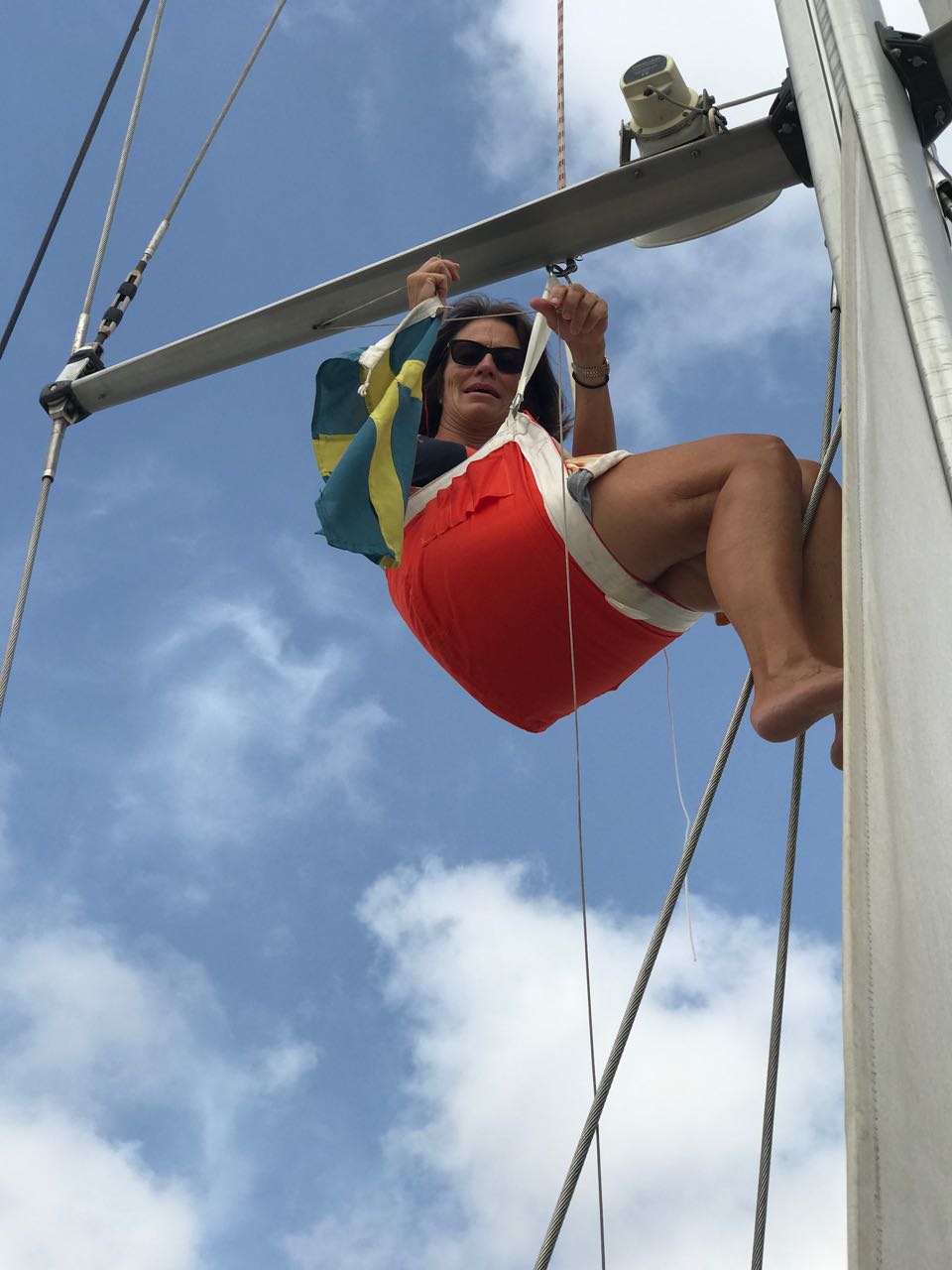
Finally, we arrived into Torrevieja, where the boat previously did spend 6 months during the winter. It was great to come back, visit old friends and again leave the boat for a weeks visit back home.
There is a great repair and service team in T, so we did fix a few improvements and soon we were back again and on our way to Gibraltar. It is a 350 nm journey and we did start out testing everything in an overnight sailing the first 250 miles, before we stopped in Puerto Banus – a famous marina south of Marbella. Not the greatest experience, we should have followed the advice on Noonsite.com – stay away…

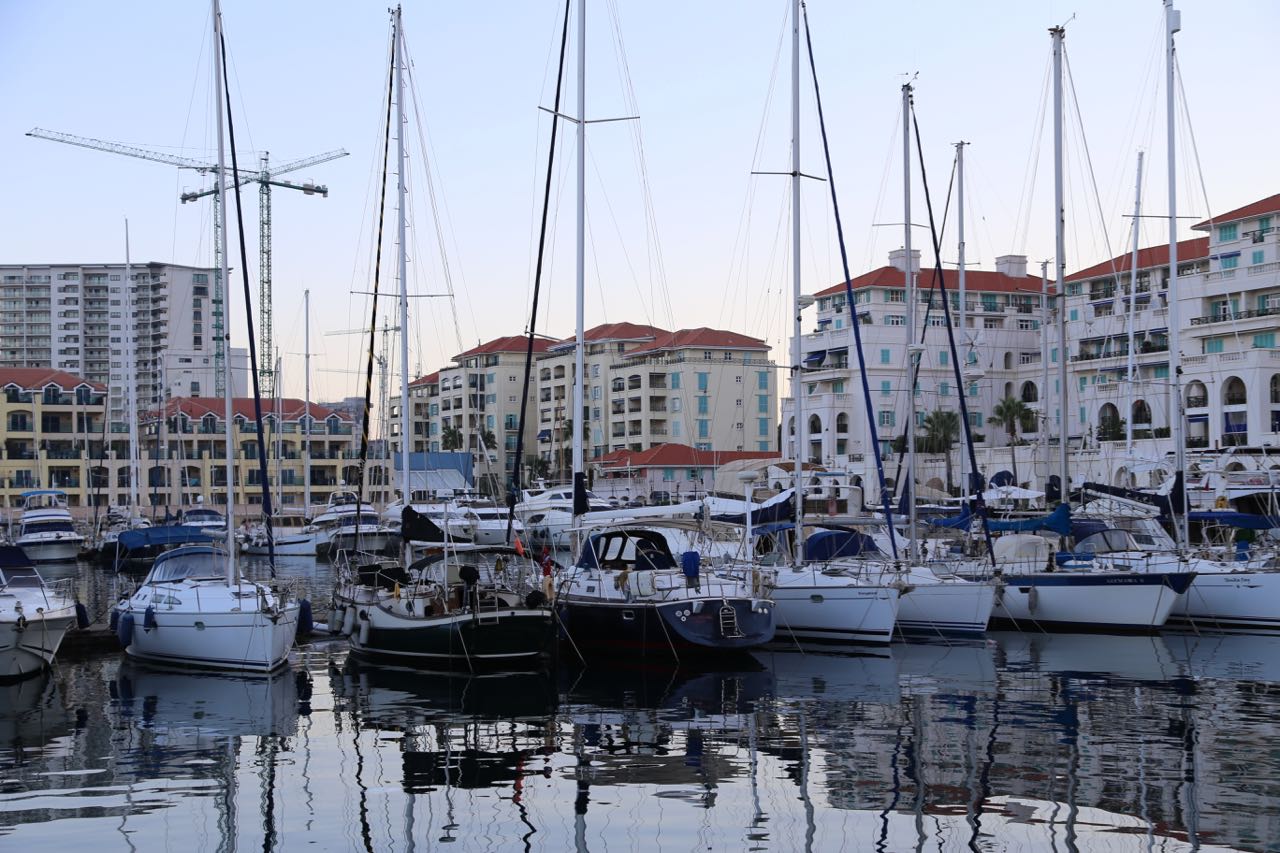
From their it was only a short daysail to Gibraltar, the old british colony – for meeting 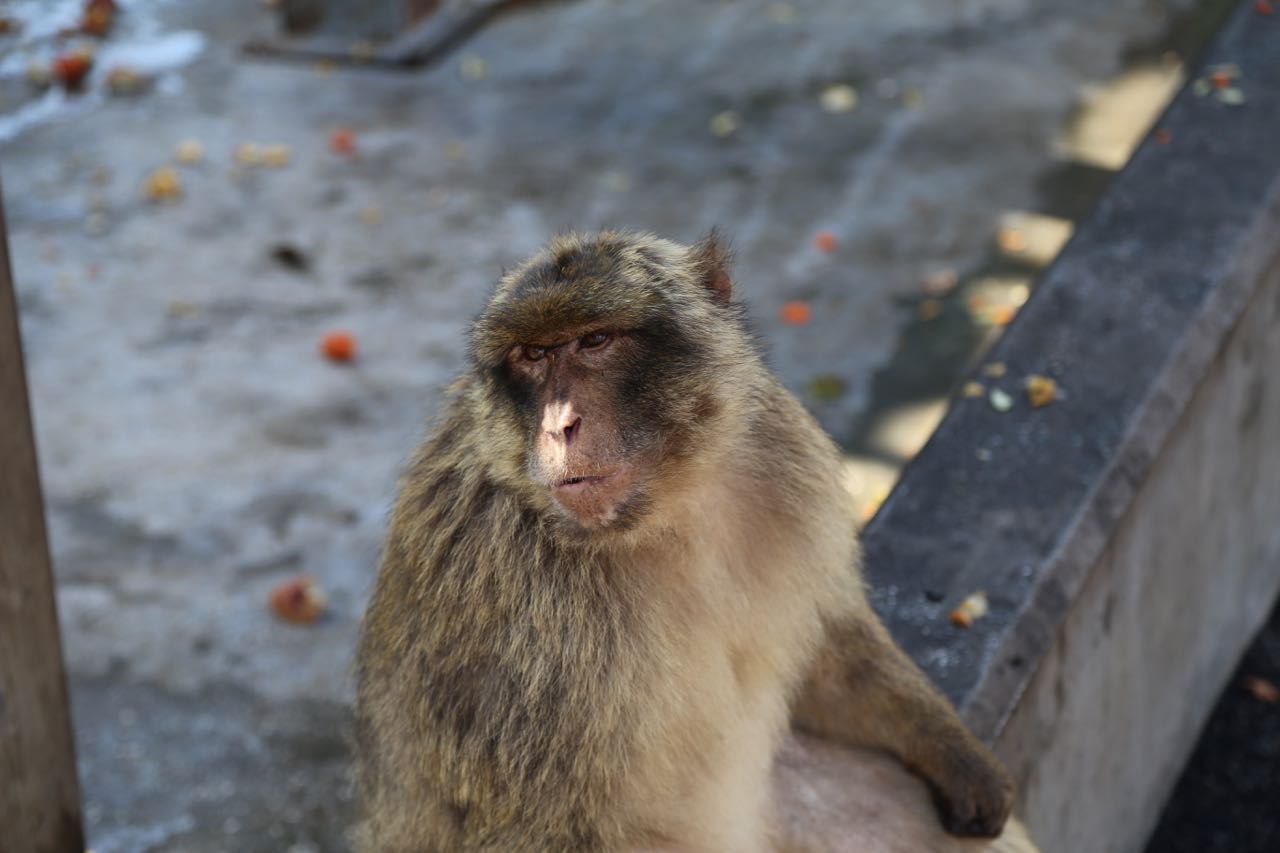 friends, bunker diesel, water and food. We enjoy wonderful days and started to wait for a weather window across to Madeira. Madeira is 630 nm from Gibraltar and in mid september it is starting to gust on the Atlantic. On top of this, it was the longest double-handed crossing we had ever engaged into, so we both wanted it to be a succes.
friends, bunker diesel, water and food. We enjoy wonderful days and started to wait for a weather window across to Madeira. Madeira is 630 nm from Gibraltar and in mid september it is starting to gust on the Atlantic. On top of this, it was the longest double-handed crossing we had ever engaged into, so we both wanted it to be a succes.
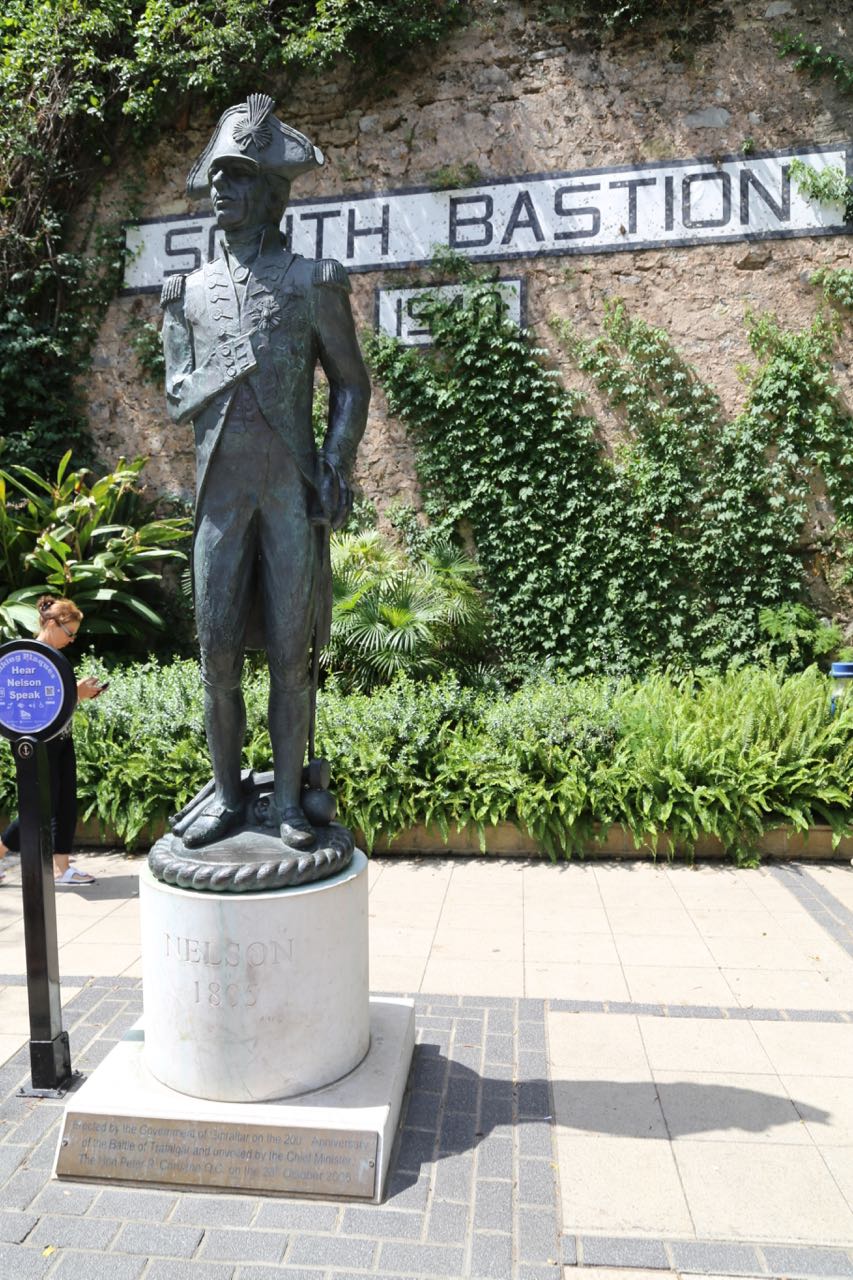
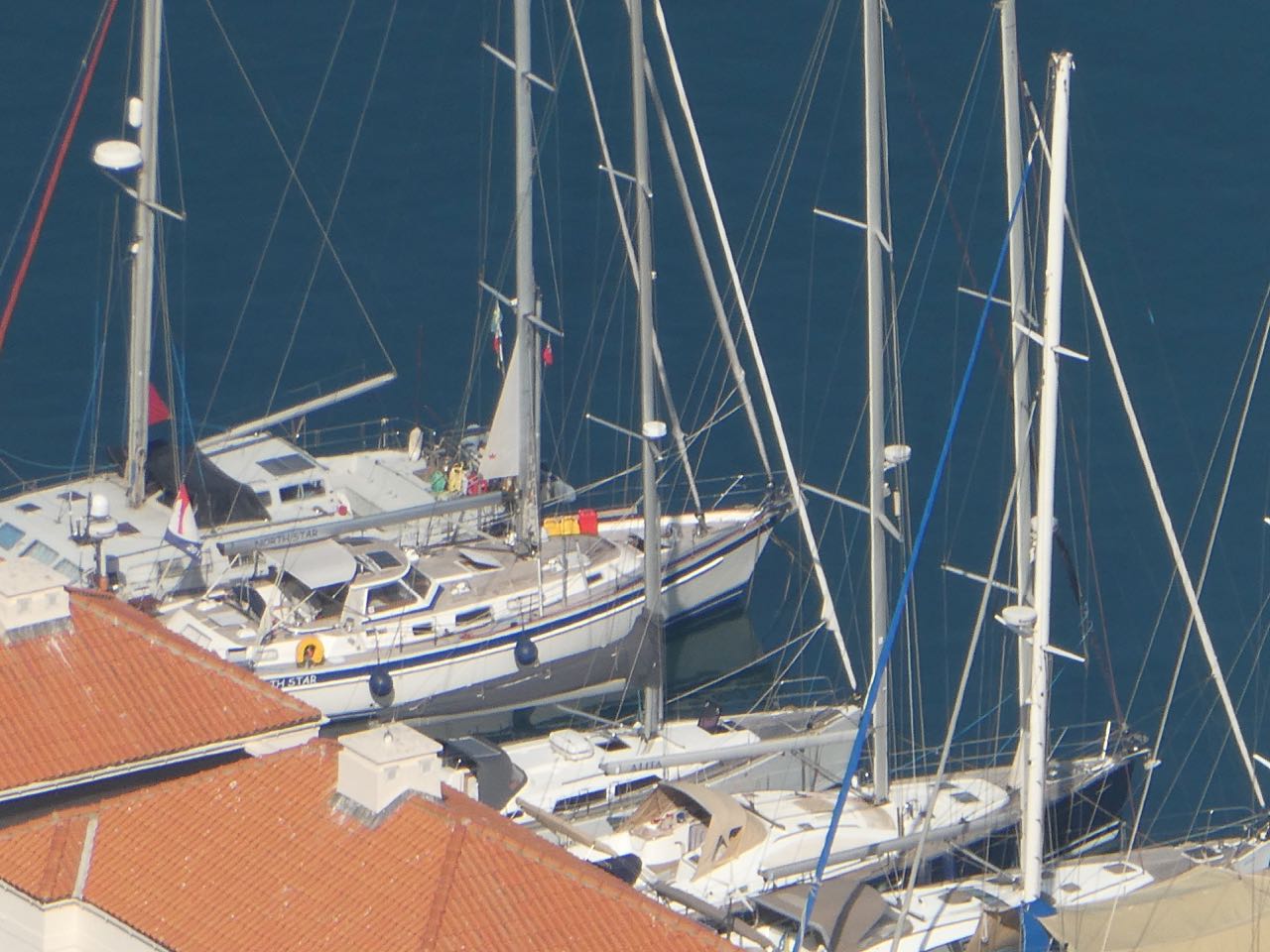
Simon our fantastic weather guru, who advice us on routing and weather on longer crossings and we, exchanged information about lots of wind and lots of waves – so instead of crossing, we went to Morocco for a couple of days. We met with John and Amanda from Mahina, who have sailed more than 350.000 nm and have a great training school which can be found on mahina.com. They came from Morocco and recommended us to go to Smir.
We stayed in Marina Smir, only 30 nm from Gibraltar, and had a wonderful stay. People are great, it is very easy to check in and out of the country. Marina, custom and police offices is all in the same building and they go out of their way to help a sailor with no language skills in Arabic or Spanish. It was really easy to find a guide in the Marina and the cost for a full day including the car was reasonable, around the 140 Euro including tips. We did an excursion to Chechaouen, the blue city, and Tetouan. It was only a day trip but we got a fairly good impression of a small part of the country. Great adventure and we hope more boats will start to visit Morocco.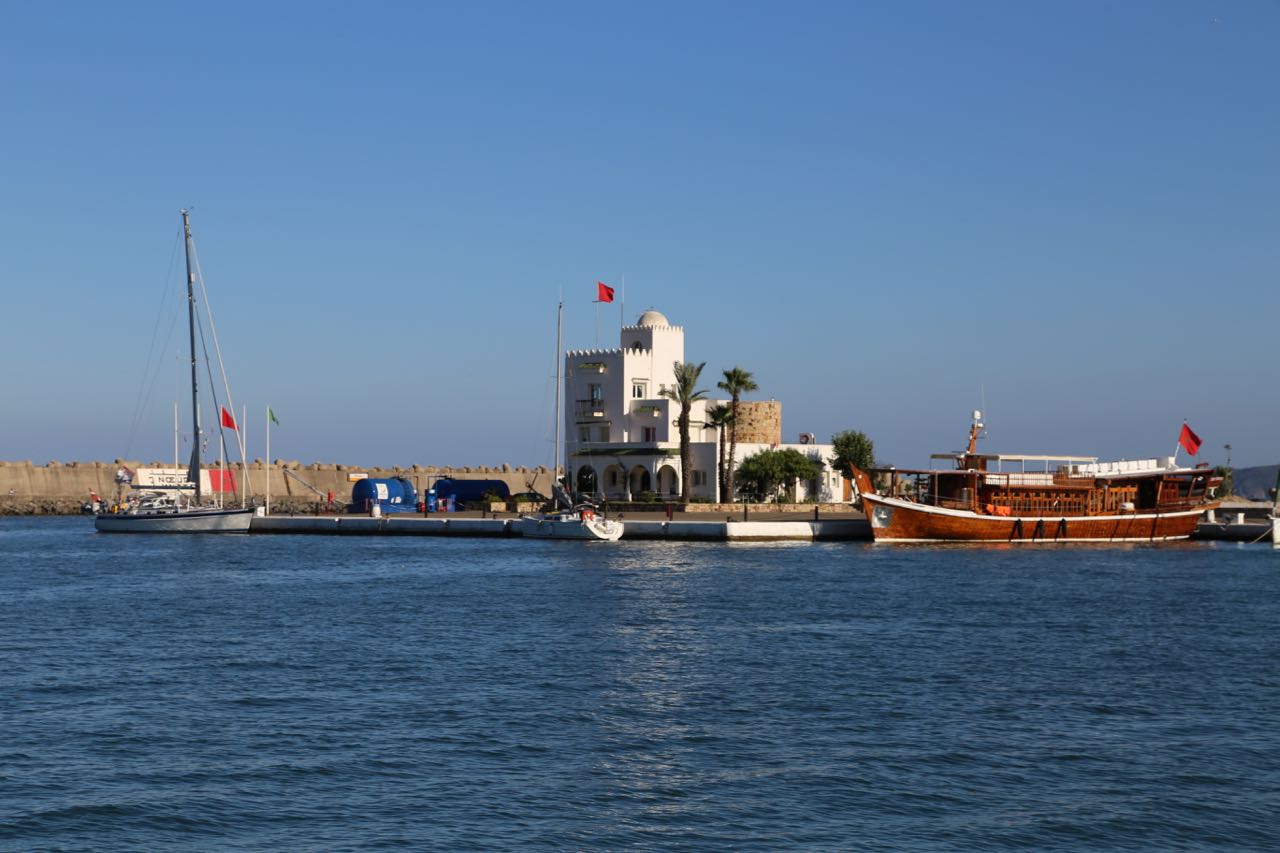

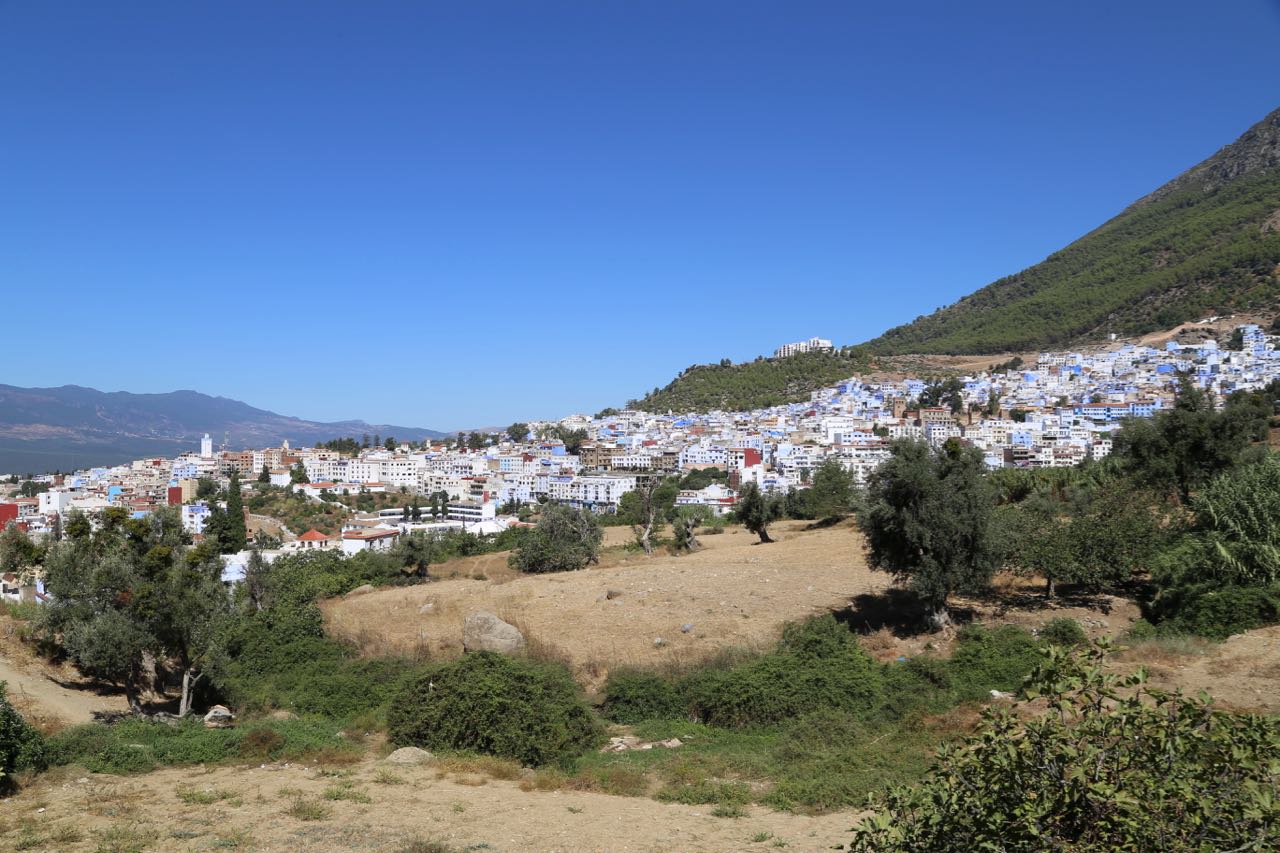


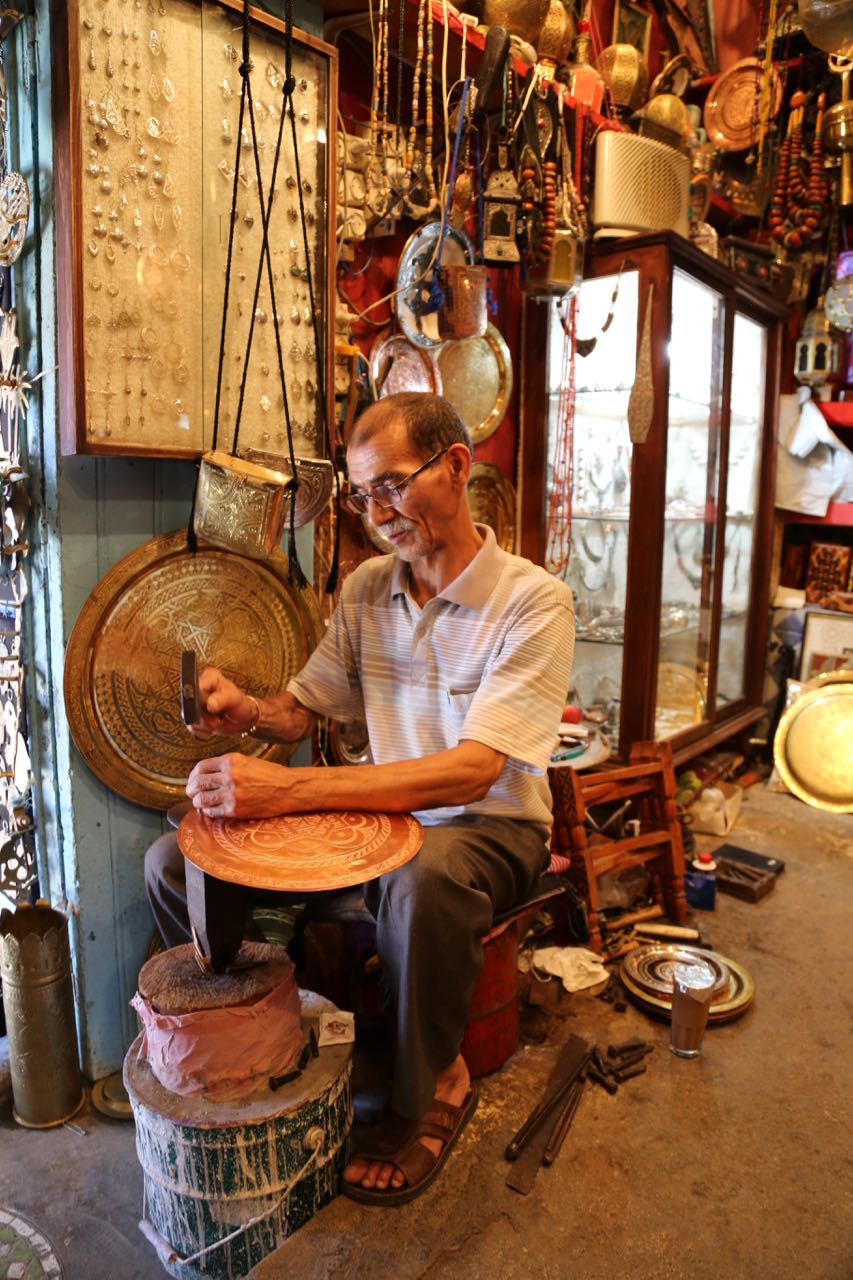
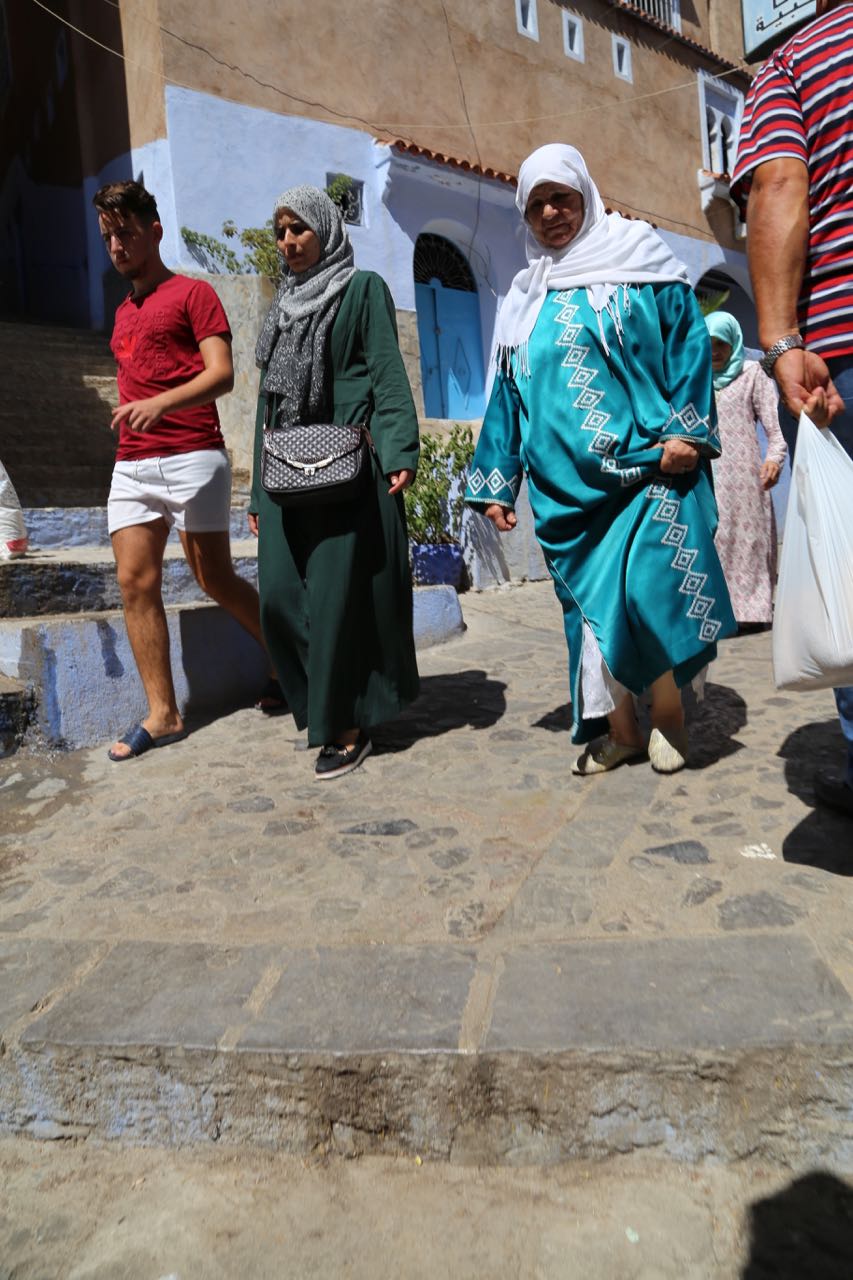

Back in Gibraltar, Thursday morning came and we had realised that the weather was not going to get any better, so we left Queensway Key Marine at 0800 and raced with the winds and tides out through the Strait, until 6 degrees West and onwards. Here the winds were supposed to die out, but instead they increased.

It was a fun, fast and tough crossing, as we expected and maybe even a little more. We arrived in Madeira on Saturday evening around 2130 after 3 days and 13 hours at sea with a lot more confidence in North Star and our self. We were tested and as a team, we did pass. Does that mean the anxiety is gone? No, you always feel a little nervous when you embark on a longer crossing, because independent of your preparations and understanding of the weather conditions – nature has a way of throwing a curveball.

But believe me, the bootle of champagne we shared in Quinta De Lorde late Saturday night, was the best bottle we have had, in a long time. And ahead of us were Madeiras hiking trails, beautiful gardens and of course Funchal City.
From Torrevieja to Palma de Majorca via Copenhagen
When we left North Star in November last year in Torrevieja, we were quit busy packing everything away in our old house in Denmark. Sorting and packing the house was both physical and psychological tough, as we went through boxes with ancient memorabilia and had to take decisions on what to save and what to throw away. But the months away from the boat provided us with time and opportunities to participate in training sessions in preparation for our blue water sailing life. Bluewater sailing courses, medical courses, radio courses and a few more. It was fun and at the same time, we keep meeting people in these 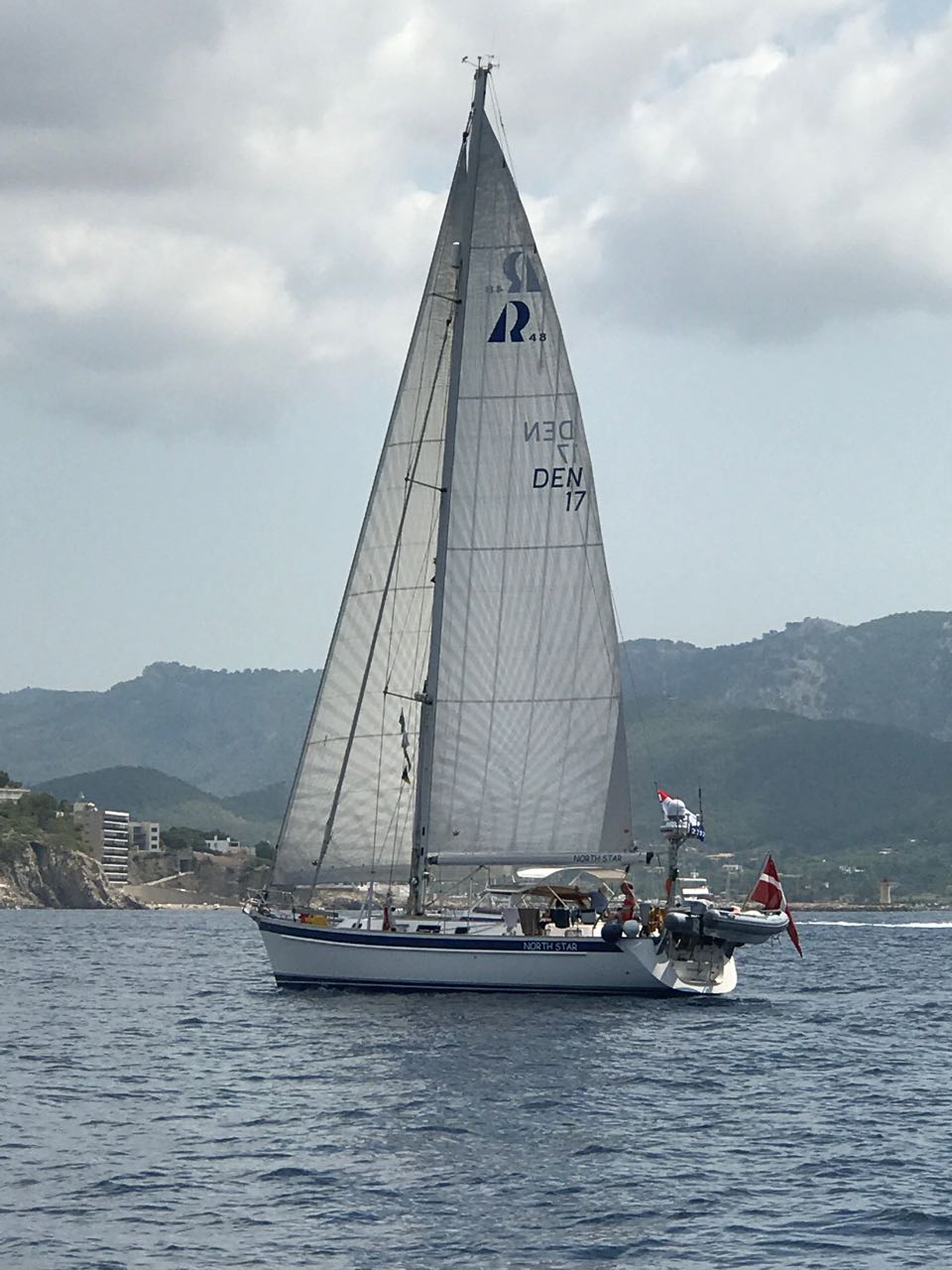 courses with the same dream and some of them becomes new friends. We are slowly being accepted into this micro cosmos of sailors sharing the dream.
courses with the same dream and some of them becomes new friends. We are slowly being accepted into this micro cosmos of sailors sharing the dream.
After some months in London, we were back in 35 degrees hot Torrevieja by mid june, with a long list of maintenance items. We only had two days to empty the shipped boxes from home and pack the boat, before North Star went on land for polishing and bottom paint. So we were surprised over the 11 large boxes with tools, spares and books, which piled up on the pier. We did manage to give away a number of things (read, had to), which we do not need in our future life and the rest found its natural place in our 15 meter long floating home.
The list of maintenance was as usual so long, that it took us about two long weeks to finalised it all. The first items was the usual polish and paint and engine/generator stuff, which we have to take care of monthly and in a big yearly service check.
But we also changed the anchor setup, new 100 meter chain for the Pacific, new anchor 40 kg Rocna and a brand new anchor winch, with twice the power of the old one.
Last year we learned the hard way, that what was waterproof in our Baltic home waters, was maybe not waterproof in the Atlantic, so a new skylight and replacement of a few deck fittings, have made life dryer under deck.
 Late june we left Torrevieja, with a shorter todo list, a shinny ship and high spirits. Finally we were on the move and the course was set towards the Balearic Islands – the stone throwers islands !!!. We visited Formentera for a few days, which is a nice place with great anchorages, but the island is quit touristic. Then we travelled to Ibiza, where we anchored out in a wonderful bay and enjoyed an evening with great food, sunset and cool drinks. We realised that here big boats are really big, as the sailboat next to us was 95 feet-nearly double our 50 feet….The Captain was not happy!
Late june we left Torrevieja, with a shorter todo list, a shinny ship and high spirits. Finally we were on the move and the course was set towards the Balearic Islands – the stone throwers islands !!!. We visited Formentera for a few days, which is a nice place with great anchorages, but the island is quit touristic. Then we travelled to Ibiza, where we anchored out in a wonderful bay and enjoyed an evening with great food, sunset and cool drinks. We realised that here big boats are really big, as the sailboat next to us was 95 feet-nearly double our 50 feet….The Captain was not happy!
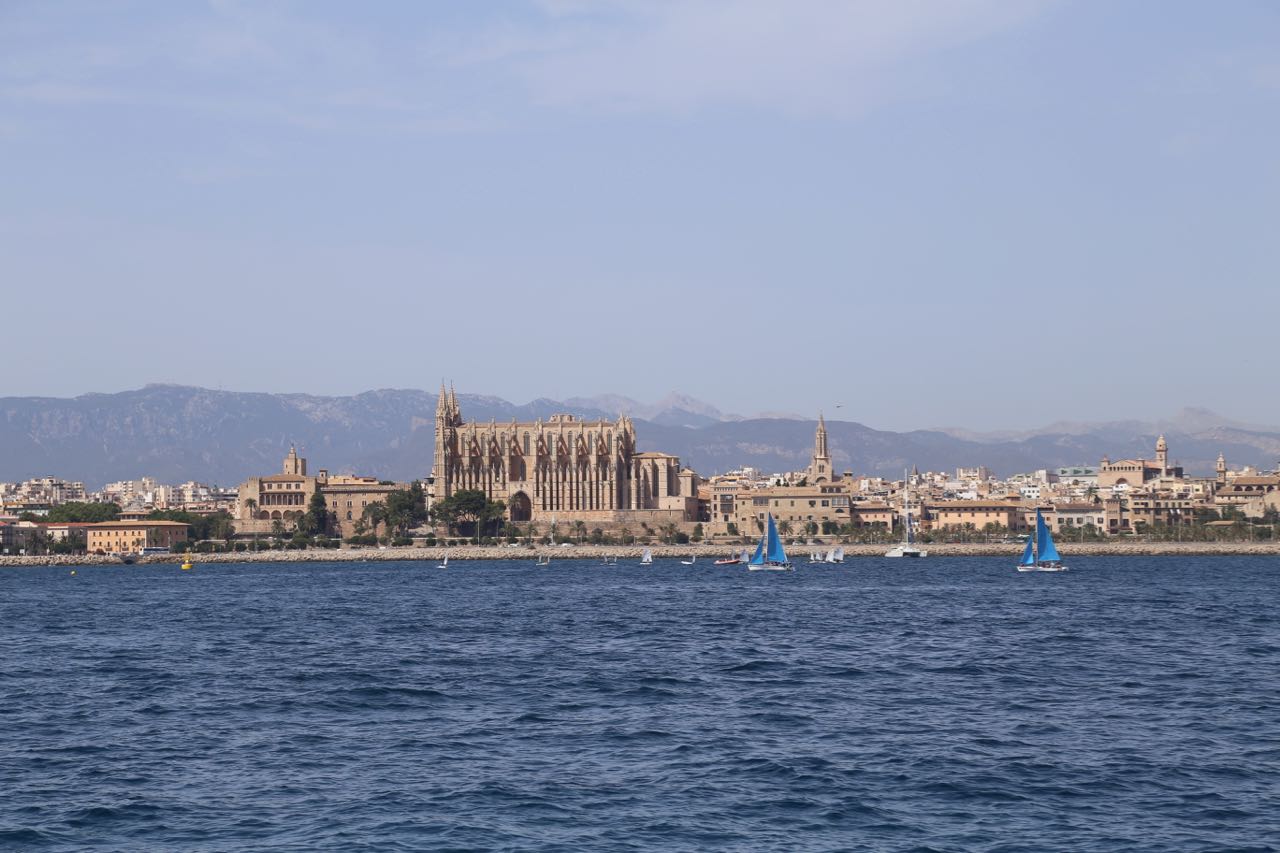 Next stop was Palma de Mallorca to meet our daughters and we arrived on the 8 th of July and was met by the next wave of friendly people, which would help us to shorten “The List”. Unfortunately the rigging check discovered a faulty swivel in top of our mast and two hydraulics hoses needed to be replaced – and that took care of most of that week. But soon our long awaited daughters started to arrive – first Alex, and then three days later Michaela.
Next stop was Palma de Mallorca to meet our daughters and we arrived on the 8 th of July and was met by the next wave of friendly people, which would help us to shorten “The List”. Unfortunately the rigging check discovered a faulty swivel in top of our mast and two hydraulics hoses needed to be replaced – and that took care of most of that week. But soon our long awaited daughters started to arrive – first Alex, and then three days later Michaela.
Palma is a wonderful boiling multi cultural city – yes, many tourist, but it is still a very nice and cosy place to spend time. Strolling the city, having coffee at the side walk just observing people passing by or visiting the wonderful Palace and Church. The Mairo occupation around 1100 have left wonderful marks all over Spain – some would say the most wonderful as you see in Rhonda, Sevilla and Alhambra. We also saw or revisited many beautiful places and restaurants and it stays very high on our list of liveable cities, in the world.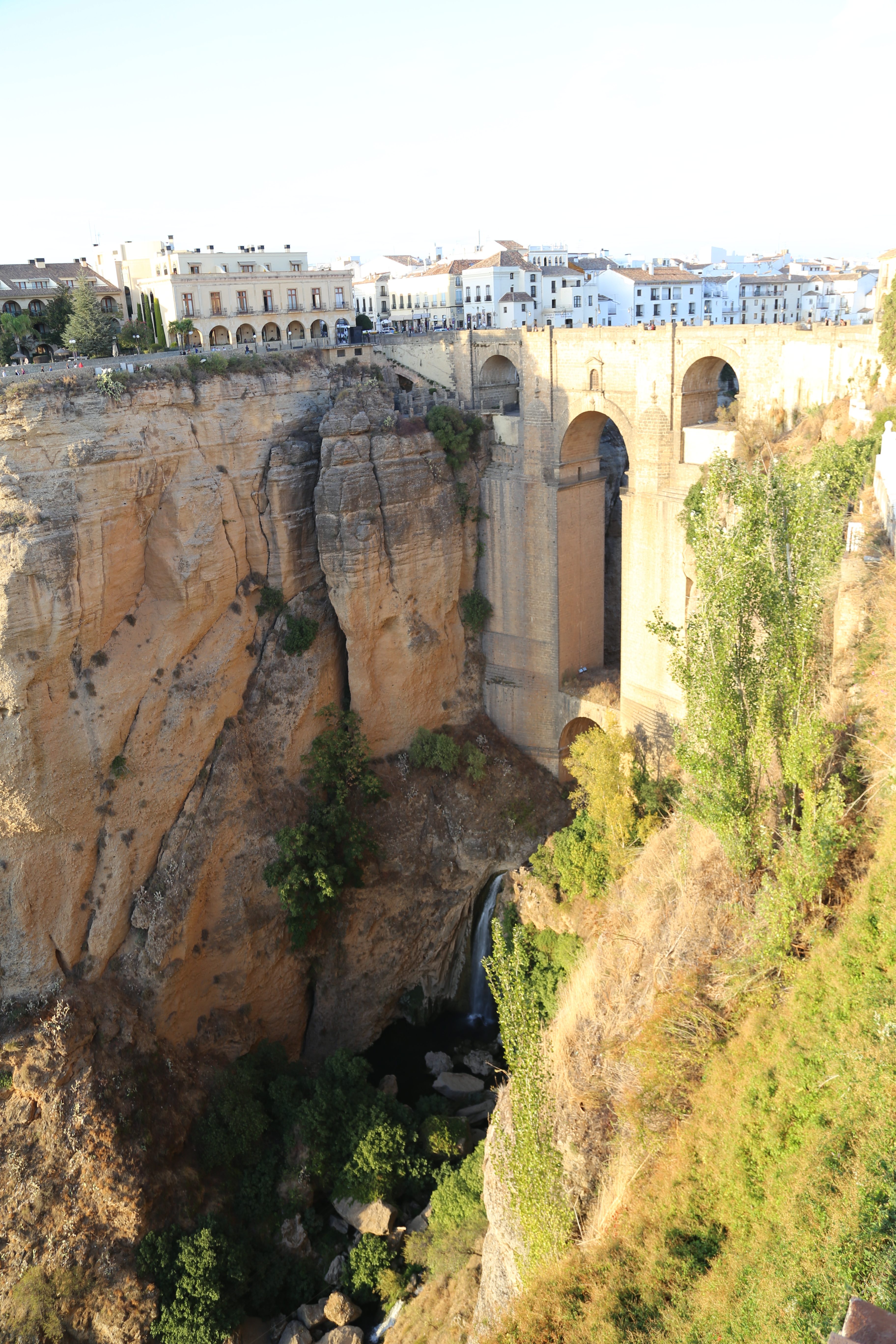
There are 5500 boats moored in the Palma bay – many very big boats, which makes a 50 footer like North Star feel like a dinghy, and there are many charter boats. Sometimes these boats exercise great seamanship, but more often they do not. So you have to take care in anchorage or when you meet them around the island. When a boat was dragging its anchor during the night or not obeying to the rules of the sea, you could be certain that the number on the stern started with a 6, indicating it was a charter boat.
The guidebook claims, that there are 40 marinas around Palma. We stayed in the finest Marina of them all, the RCNP, with a full size swimmingpool and a great restaurant overlooking the bay. We also stayed in the most basic charter marina, available from Sunday to Friday, when the charter boats are out and about. We actually prefer the latter, because it is right in the middle of the city and somewhat cheaper than RCNP. Both have excellent service and you can get everything fixed in Palma – at a price!
But as I said, the crew had arrived and the beautiful bays and clear 28 degrees water was waiting, so we left Palma and sailed west and north. First towards Port Anthrax, which is a great marina and bay with moorings and room for anchorage. The restaurants and the ambiance is just very nice.
From their we continued around the Island towards the west coast and visited a number of anchorage as the wind came from east while we were their. We went as far as Soller, where we spend a few days hiking the beautiful Mountains, visited small ancient villages and met with great friends.
During our month in Mallorca we visited north, south, east and west and what a variety in one island. The glories mountains in the Northwest, are a hard place for a sailboat in rough weather and not to many places to hide – so one have to be very careful, when the North westerlies suddenly comes sweeping down from France. To the east is low land, many quite protected bays and beautiful sailing. In many ways the sailing reminds us about sailing in Denmark. The Marinas are well organised and friendly, but it always pays off to reserve in advance, even if you have to move the dates. Do not be surprised about the price levels, which goes from twenty to 180 euro – so great variety. Many marinas also have buoys, which is less expensive and much more comfortable for our taste.
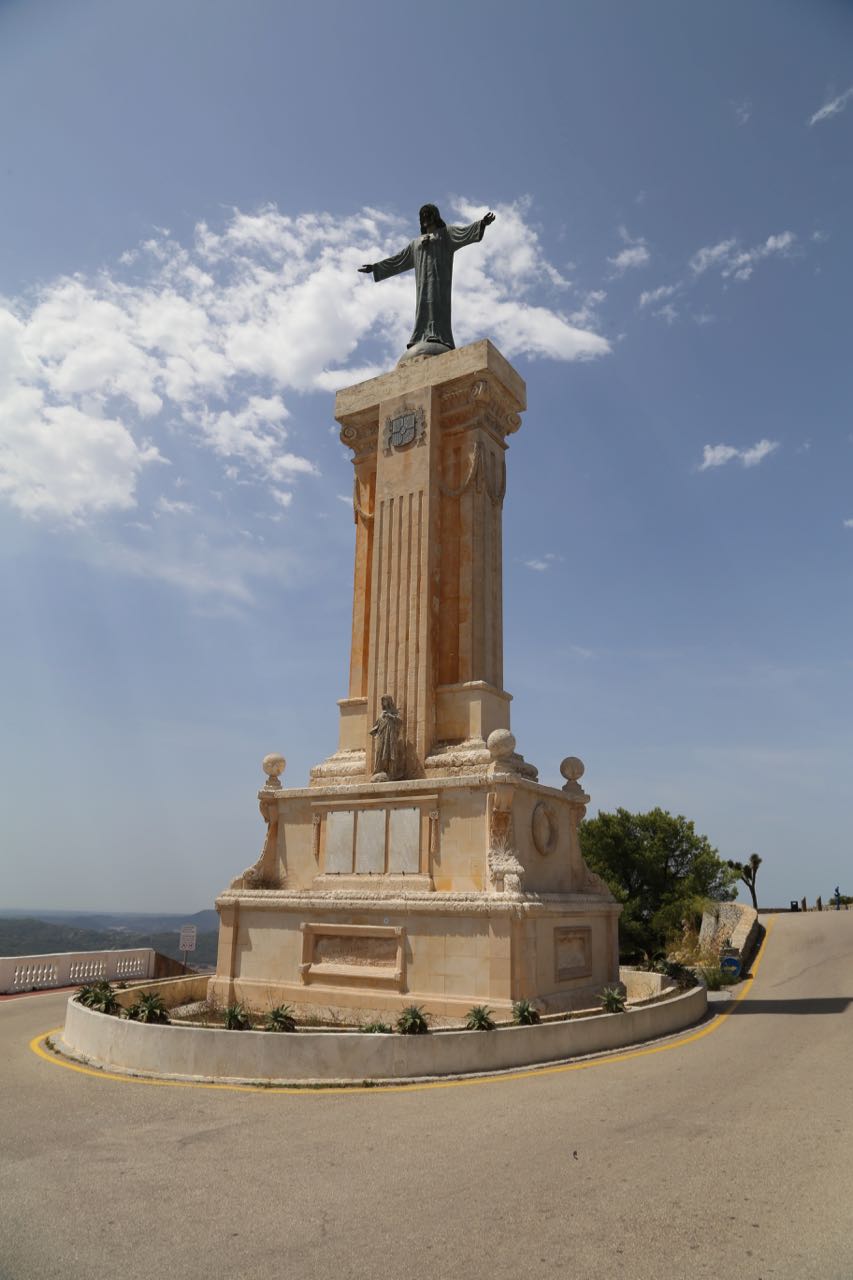 Soon our time was up and we moved on to Menorca. A wonderful island, which is much less touristic than Mallorca. The island is beautiful with many great bays on the North and south side for anchoring and swimming and their are two very interesting towns. Cinderella was the first capital and the oldest town, with a well protected marina and picturesque old town. There is also a well protected anchorage in front of the entrance to the marina. Mahon on the far east side is the current capital and is the one with the greatest strategic importance, mostly established by the Spanish and the British. It also has the greatest natural harbour in Europa, according to the guidebook, which offer great protection to a sailor. We only spend 6 days on the island, until the weather forecast forced us to seek refugee in the bay at Portocolomn on Mallorca, as Marie should travel home for a visit and we did not want to risk here departure.
Soon our time was up and we moved on to Menorca. A wonderful island, which is much less touristic than Mallorca. The island is beautiful with many great bays on the North and south side for anchoring and swimming and their are two very interesting towns. Cinderella was the first capital and the oldest town, with a well protected marina and picturesque old town. There is also a well protected anchorage in front of the entrance to the marina. Mahon on the far east side is the current capital and is the one with the greatest strategic importance, mostly established by the Spanish and the British. It also has the greatest natural harbour in Europa, according to the guidebook, which offer great protection to a sailor. We only spend 6 days on the island, until the weather forecast forced us to seek refugee in the bay at Portocolomn on Mallorca, as Marie should travel home for a visit and we did not want to risk here departure.
After a great visit by a very good friend, Marie returned from Stockholm and it was time to start the return to the Atlantic and the Caribbean.
From Lagos via Gibraltar to Torrevieja
Lagos is a wonderful, well-protected harbour with lots of room and water to at least a draft of 3 meter. But try to arrive and enter at half tide going in – it will provide you with a bit more wiggle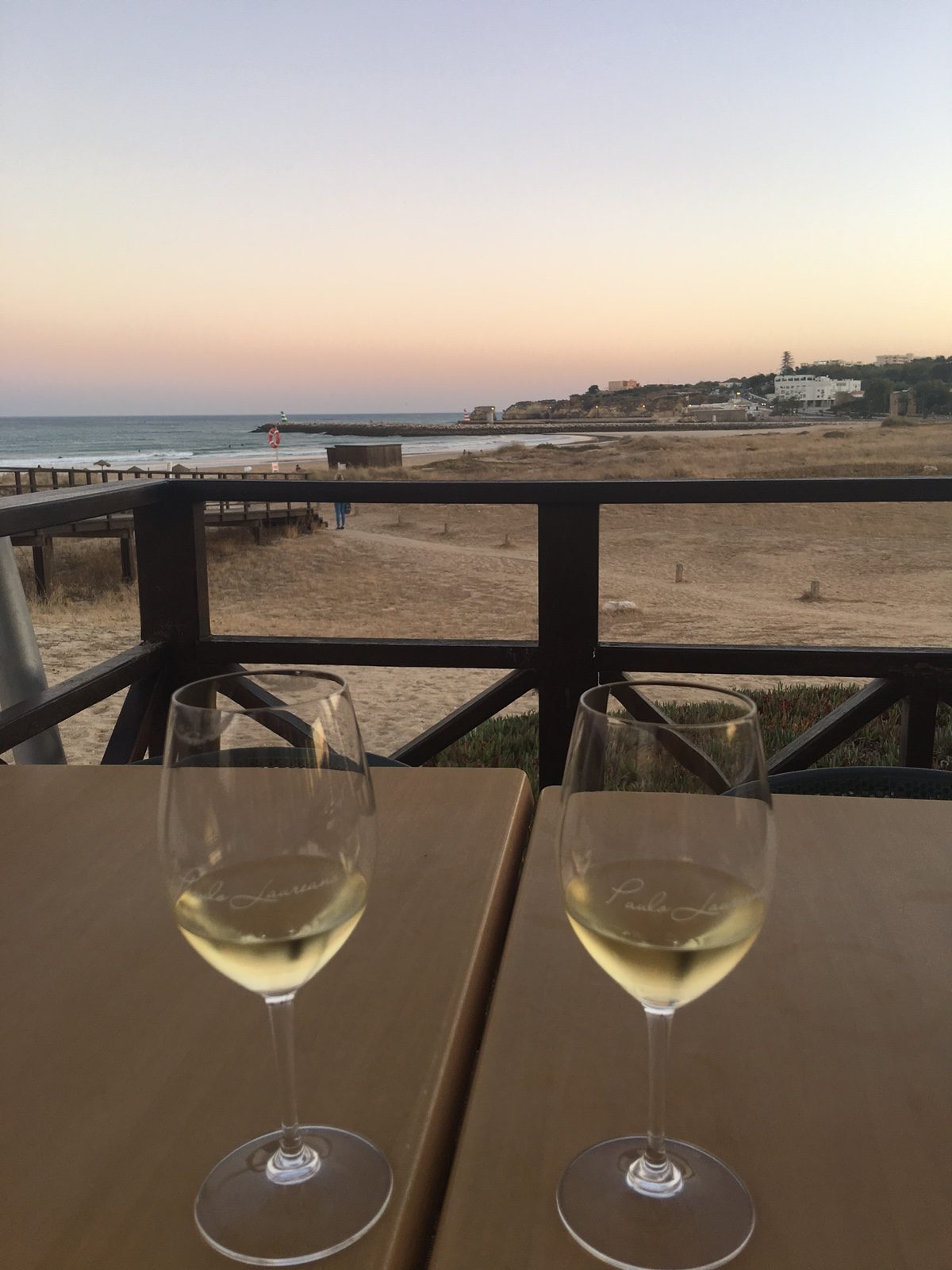 room. You need to pass through a long channel and a bridge before you are in the marina. There are lots of restaurants in the area, as well as one of the best chancelleries and boat yards in this part of the world. For this reason, many cruisers spend the winter here and never leave.
room. You need to pass through a long channel and a bridge before you are in the marina. There are lots of restaurants in the area, as well as one of the best chancelleries and boat yards in this part of the world. For this reason, many cruisers spend the winter here and never leave.
The town is beautiful and dates back to the Romans with small streets, restaurants and shops – but overall it is a very touristic scene with the English charter market dominating. Of restaurants, we can recommend Camil and Sao Roque both for their views and their fish, which is better than the already great fish, one can enjoy here in Portugal. Lagos is also a really great harbour to leave your boat for as long as you need – and that we did.
We went to Athens for work and pleasure. The stories about the Greek situation seems far away, when you visit this wonderful city. We arrived on the 20th of September, just in time for celebrating Marie’s birthday. We worked and took time off to enjoy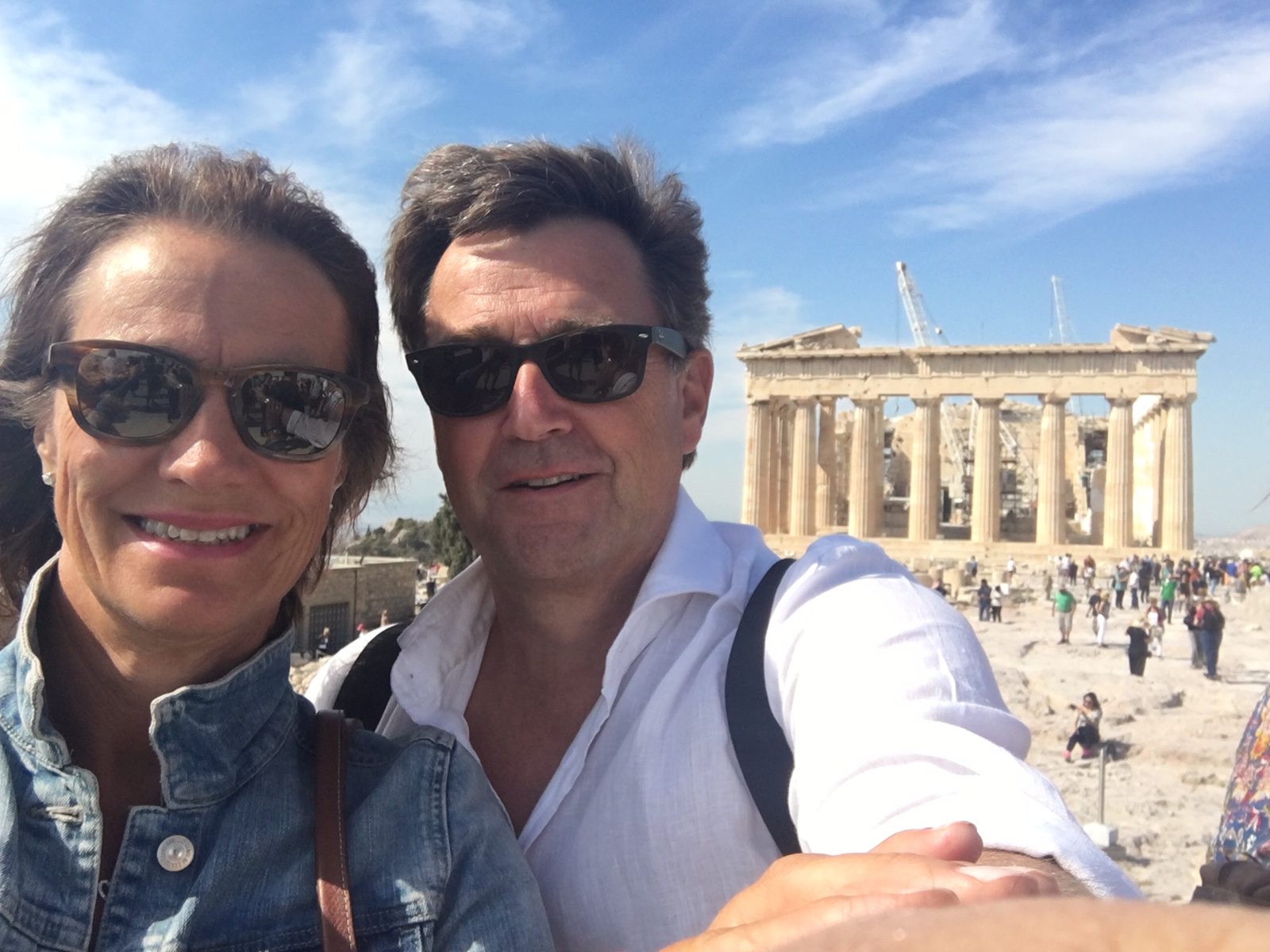 San Torini, the old quarters in Athens and of course Acropolis. I am always taken by the greatness of the past in Greece and ask myself the question – what happened, what fortune changed all of the ancient greatness into modern Greece?
San Torini, the old quarters in Athens and of course Acropolis. I am always taken by the greatness of the past in Greece and ask myself the question – what happened, what fortune changed all of the ancient greatness into modern Greece?
Soon back to Lagos, realizing the beauty of flying across Europe – it was time to say goodbye to Martinho and Ingrid, who own and run the marina.
From here we sailed to Vilamoura, another great marina and wonderful city. There is a fine little fish restaurant behind the marina office, which is a must to visit, called Tasquinho O’Manel. Vilamoura won our hearts and we intend to return. Lots of activities, great supermarkets, nice and secure marina, and great beaches near the marina and the old Quartiers. But we had to leave after already having extended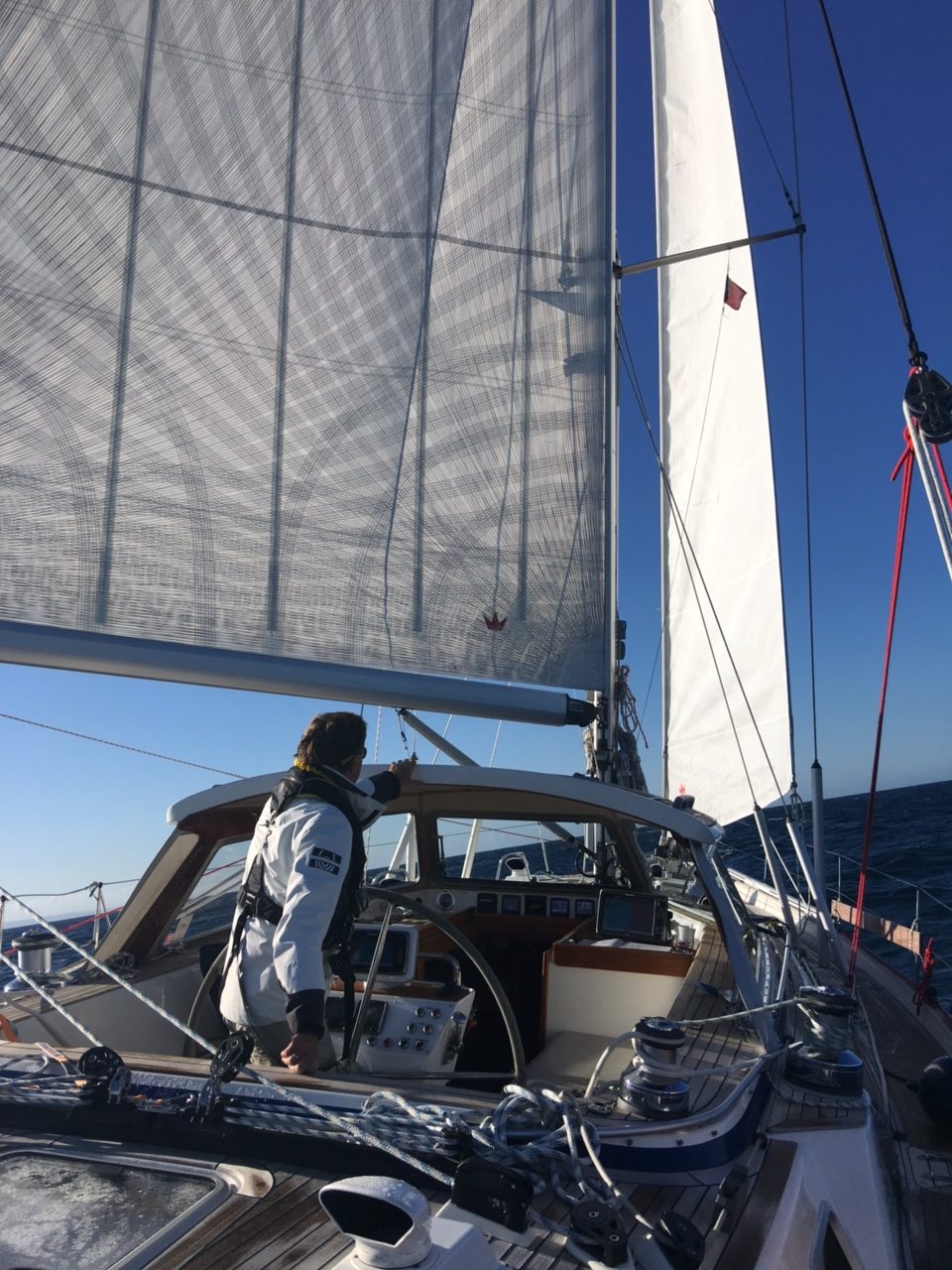 with another day. But soon very soon, we will be in the Med – another dream will come true, passing the Gibraltar Rock under our own keel.
with another day. But soon very soon, we will be in the Med – another dream will come true, passing the Gibraltar Rock under our own keel.
We left Vilamoura behind setting a course for Ilha da Culatra, which is an island in the Faro Delta, where time stopped thirty years ago. Life is slow and pleasant with a ferry twice a day to Faro, bringing both the occasional tourist and opportunity for commuting to work. It seems to be a nice life without many of the challenges we create for ourselves, but also some of the fun. We slept quietly on anchor in the bay and left early in the morning with the first light, together with the fishermen.
Our course was set towards Cadiz and we had a wonderful 70 nm sail, which took us into the public marina in Cadiz with the last light. A spectacular entrance with old city walls and watch towers. We moored in a terrible marine outside the city, but with our bikes it was not a problem at all and the beauty and historic significance of Cadiz, overshadowed the inconvenience of the marina. In short, we really loved Cadiz with its narrow streets, fortresses, restaurants and very friendly people. We spent a wonderful day touring on our bikes and saw it all. What would we do without our bikes?! The adventure radius increases and the legs feel much better in the evening. We used Lonely Planet and it took us around in Cadiz, but there were also marked walking paths in different colors, which were a hit – thanks to the tourist office, which Marie visited first, as usual.
A little disturbance in the flawless weather we had enjoyed for weeks was expected on Wednesday and Thursday, so we took off on Tuesday for Gibraltar. It was an exciting sail because we had to sail into the Med, where The Atlantic and The Med meet. At some point we were cruising with the tide at 13.5 knots, the fastest we have sailed with North Star and it became our fastest passage since we left Scandinavian in June 2016.
It is a special feeling to enter a British outpost and enter the Med. It felt like a moment worth celebrating, so we chilled the champagne, but we were so exhausted that it stayed there.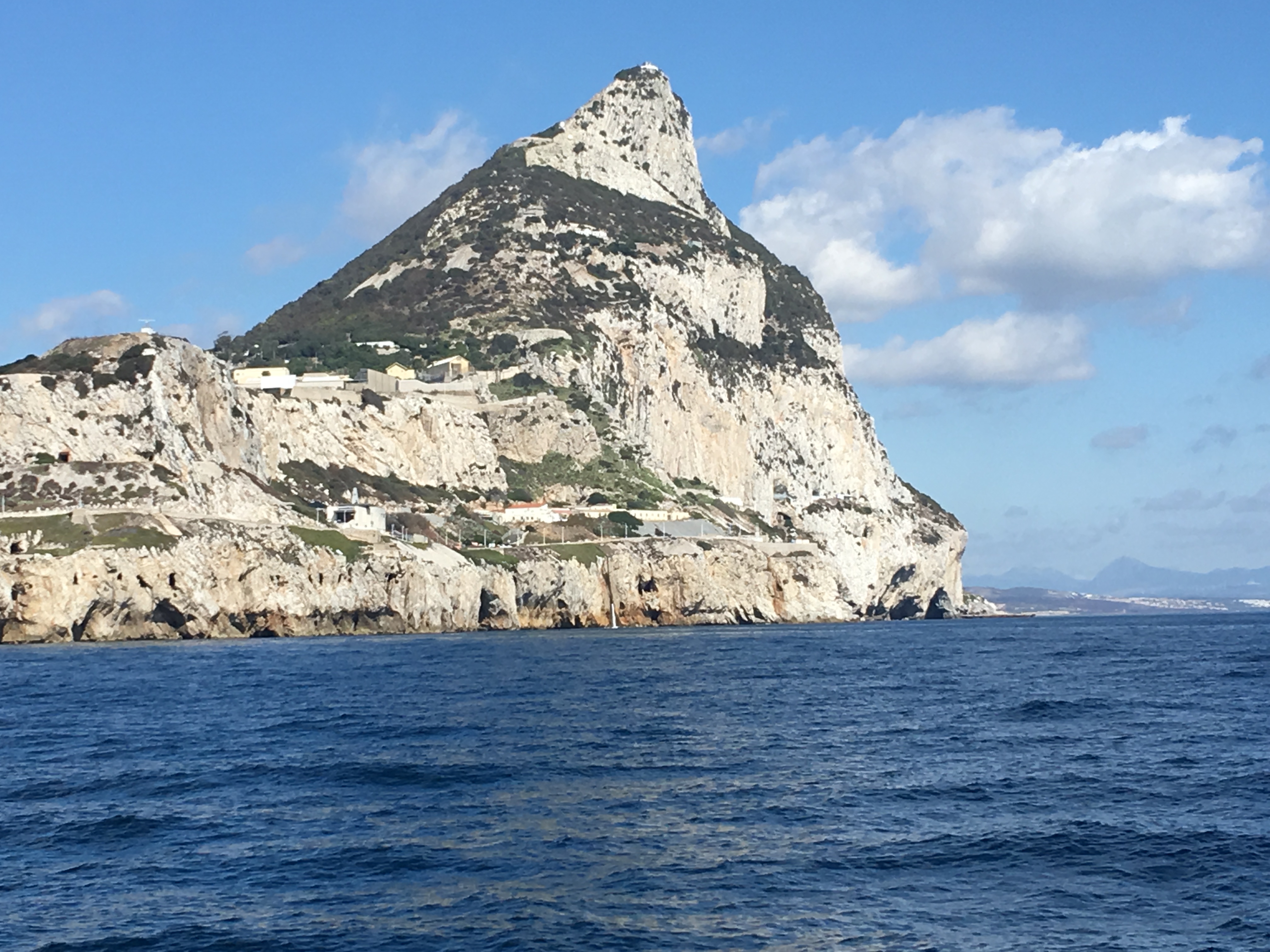
We spent a couple of days in Gibraltar arriving on the 11th of October and left on the 14th, after a visit from home. Kristian which sailed with us for a couple of weeks up north and his girlfriend Josefine, spent a night. But on the 14th in bright sunshine and the wind on the aft starboard quarter, we rounded the Rock and sailed into the Med – it was a wonderful feeling.
O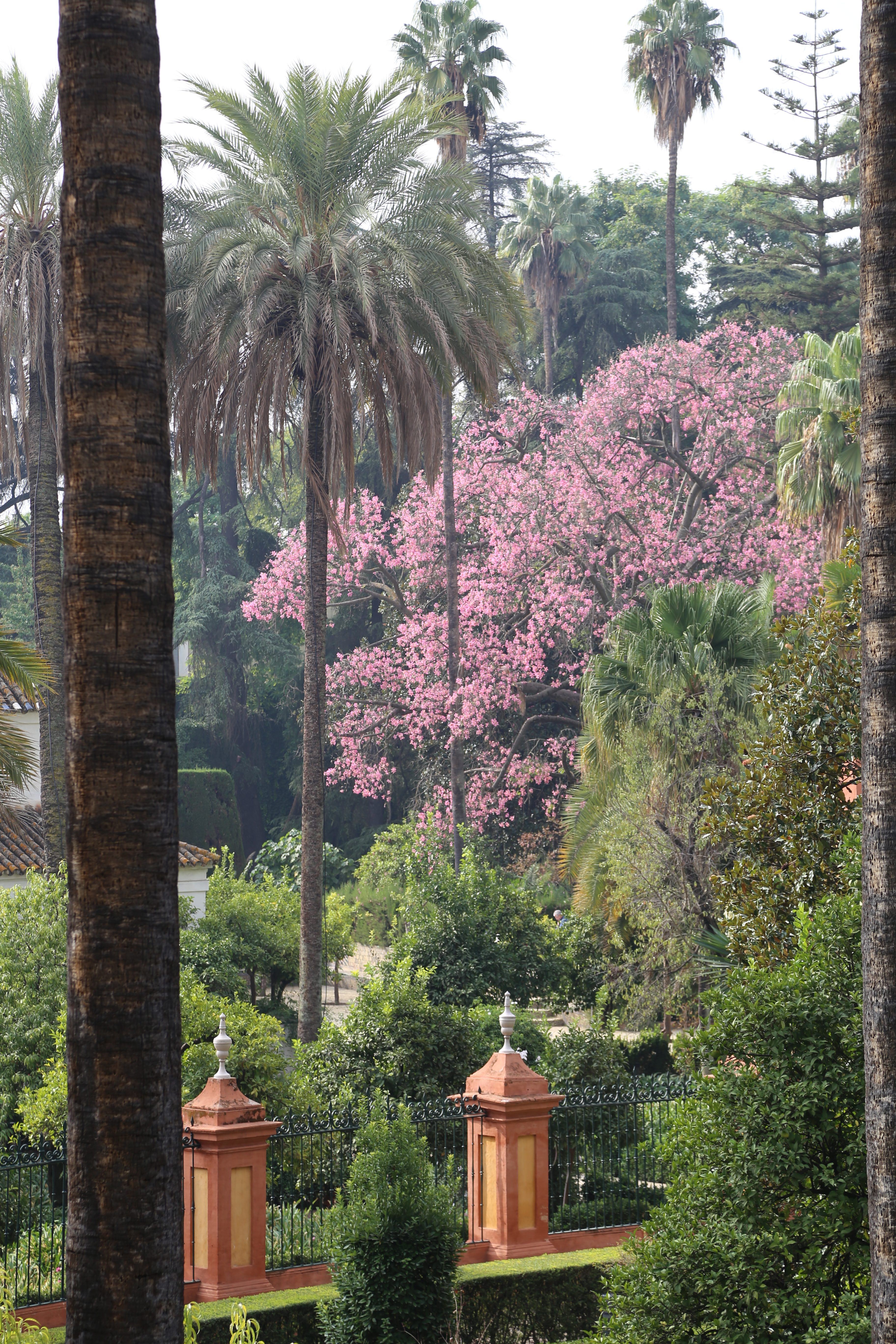 ur first stop was after a 30 nm sail to Marbella, to meet friends and find a town we visited ten years ago. Nice marina, but with limited space for our size and a somewhat shallow depth. Again we did not find the really big boats, but were told that they were in Puerto Banus 8 miles before Marbella. The harbor master is friendly and flexible, and we enjoyed our stay. We visited Sevilla and Ronda in a rented car from costasbiler.dk, which were very helpful and service minded. The drive into the Sierra Nevadas to Seville is easier from Cadiz. But still it only took us less than 3 hours, via the beautiful mountain roads and we were rewarded with a visit to one of the most beautiful cities we have seen, since we left home. We stayed overnight in a nice little three-star hotel near the Cathedral, which provided parking and great rooms and service.
ur first stop was after a 30 nm sail to Marbella, to meet friends and find a town we visited ten years ago. Nice marina, but with limited space for our size and a somewhat shallow depth. Again we did not find the really big boats, but were told that they were in Puerto Banus 8 miles before Marbella. The harbor master is friendly and flexible, and we enjoyed our stay. We visited Sevilla and Ronda in a rented car from costasbiler.dk, which were very helpful and service minded. The drive into the Sierra Nevadas to Seville is easier from Cadiz. But still it only took us less than 3 hours, via the beautiful mountain roads and we were rewarded with a visit to one of the most beautiful cities we have seen, since we left home. We stayed overnight in a nice little three-star hotel near the Cathedral, which provided parking and great rooms and service.
We visited the Cathedral, the old town, Alcatar the palace, and a few old mansions and art exhibitions. We also had Tapas again, and the best so far. The bar is named El Pasaje and we had tapas in the bar, but they also have a restaurant next door. Same kitchen, different pricing.
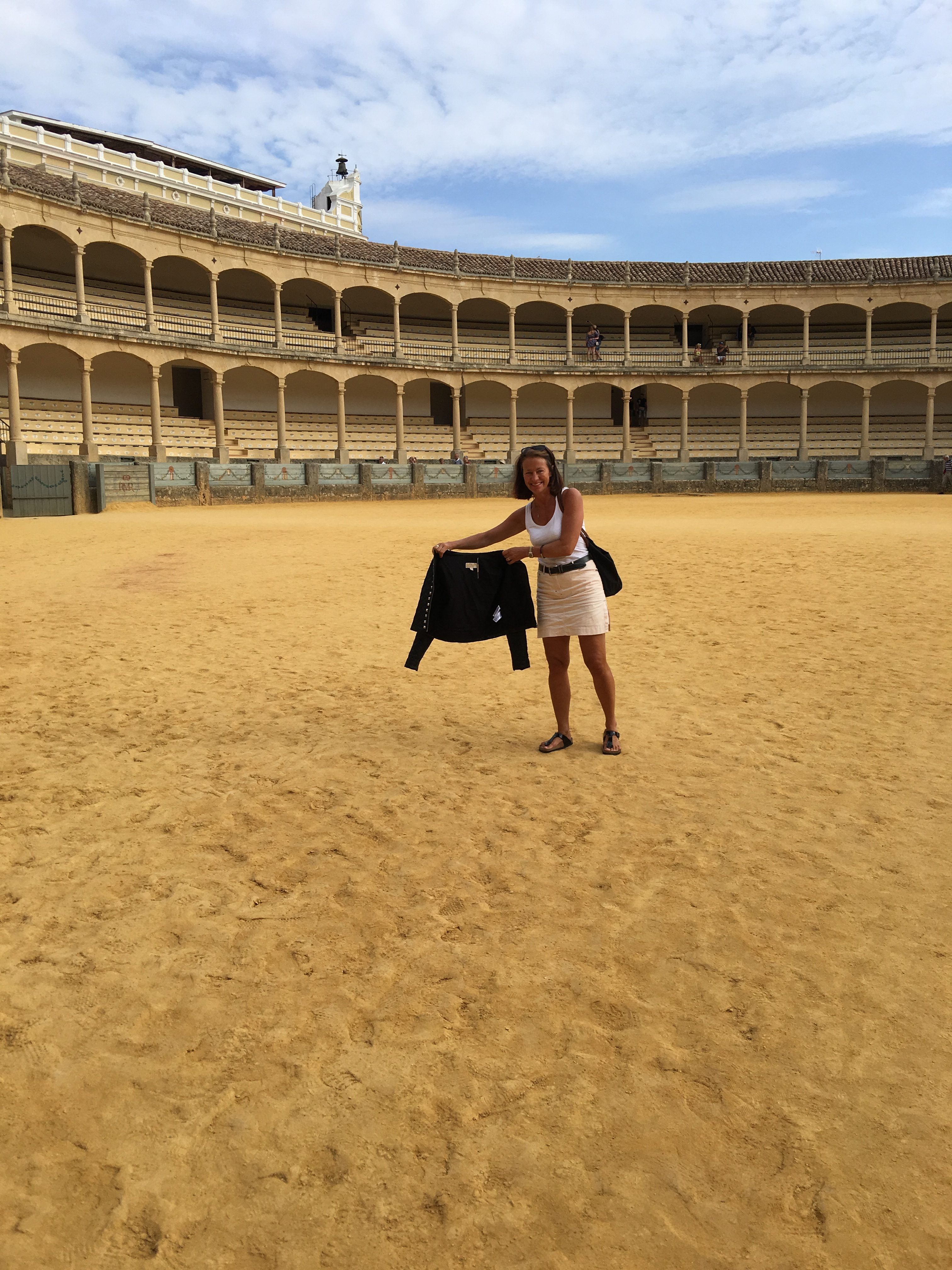 We left at lunch time to reach Ronda, a Mauri town build on top of a cliff in the middle of the mountains with the oldest bull fighting arena, at least in Spain.
We left at lunch time to reach Ronda, a Mauri town build on top of a cliff in the middle of the mountains with the oldest bull fighting arena, at least in Spain.
It is one of these places which Orson Welles and Hemingway among others have made famous – but be aware of the tourist buses…

We left Marbella to reach Marina del Este on the 18th of October, a 60 nm run on engine. It seems that the wind has disappeared completely for a couple of weeks or at least as long as we can read the forecast. We are grateful for our engine, but it is boring.
We did not have any expectation for this next stop, but it is a great little marine. Charming and friendly, but nasty in bad weather from other directions than N and E. We had no wind and a wonderful stay – reminding us of the Nordic Archipelago harbour’s. We were also taken care of by friends from Denmark, which showed us the area and took us into their homes. Fantastic hospitality and we enjoyed it. It seems that this small jewel, is where a number of our friends have decided they want to spend their spare time in the sun and in beautiful surrounding – and outside the reach of the tourist hordes. We stayed until the 20th and left early for an anchorage 65 nm east around the corner from Capo de Geta. A long day on engine, but we spend time writing, reading and preparing – so not too bad. The weather is still very nice and warm, so we keep working on the tan!
We left early morning for a beautiful anchorage just after Capo De Gato and arrived in the dark following the coast guard chasing illegal fishing boats.
The following day we reached for Cartagena, where friends would come from Denmark to visit. Cartagena is a great town, large but not to large and well worth a visit to see the Roman and Turkish influence. It is a very well protected Harbor but in southerly winds it becomes uneasy. We were into both marinas and choose the one at starboard, being slightly more quiet and modern. A great restaurant, La Catedral, need to book – next to the Roman Theatre.
From here we wanted to go to Santa Pola and left in brisk conditions on the 25th. Mid-afternoon the wind died and the nearest harbor was Torrevieja, which is spoken badly about on noonesite.com (A visit in 2012), so our expectations were not high. But more often than not, we have been pleasantly surprised. Torrevieja is a wonderful large marina – one on port and one on starboard. We choose the new marina on SB, which is swell free. Rodney, who is the business manager, is great and super customer-focused, the marina is fantastic and its surroundings can deliver all services to a yacht.
We ended up leaving North Star in Torrevieja for the winter, well-covered and maintained so she hopefully is ready for our next season.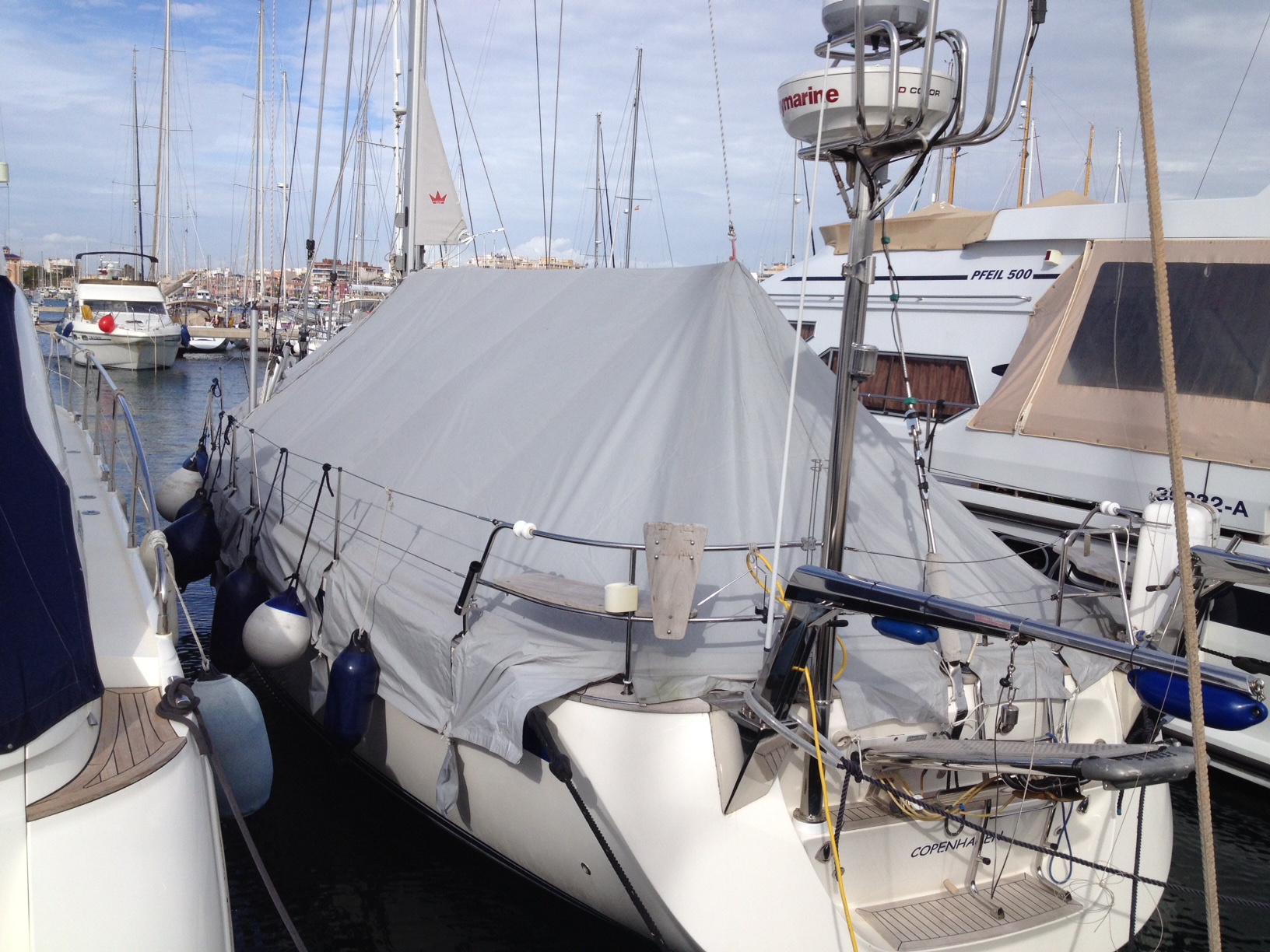
From La Coruna in Galicia to Sagres in south Portugal
The bug was itching, so on the 12th of August we had to move on to the Galician Rias of northern Spain and they were just around the corner, behind Cap Finisterre and further down. We left in a brisk breeze and were hoping that it would last to Camarinas a short 30nm sail down the coast. But unfortunately, the high pressure took away all wind and we motored. Arriving late just before dark and in a lot of fog, we let the anchor out in the bay near Barolo and enjoyed the small mountains hidden in the fog and called it an early day. Carmarinas has a very well-protected bay and is a small sleepy fishing town with a few tourists.
On the 14.8, we finally arrived late afternoon to the famous Galician Rias after travelling close to 2000 nm since Copenhagen. We left Camarinas late morning in mist and light winds and sailed out hopeful about a nice windy sailing day. And it came and went after we used the code-0 for about 30 min. Then we motored in heavy fog right past the famous Cap Finisterre, which we did not see… a highlight which came and went. Further down we passed this treacherous point, which has taken so many ships in another time, before it all became easy with GPS, AIS and Radar.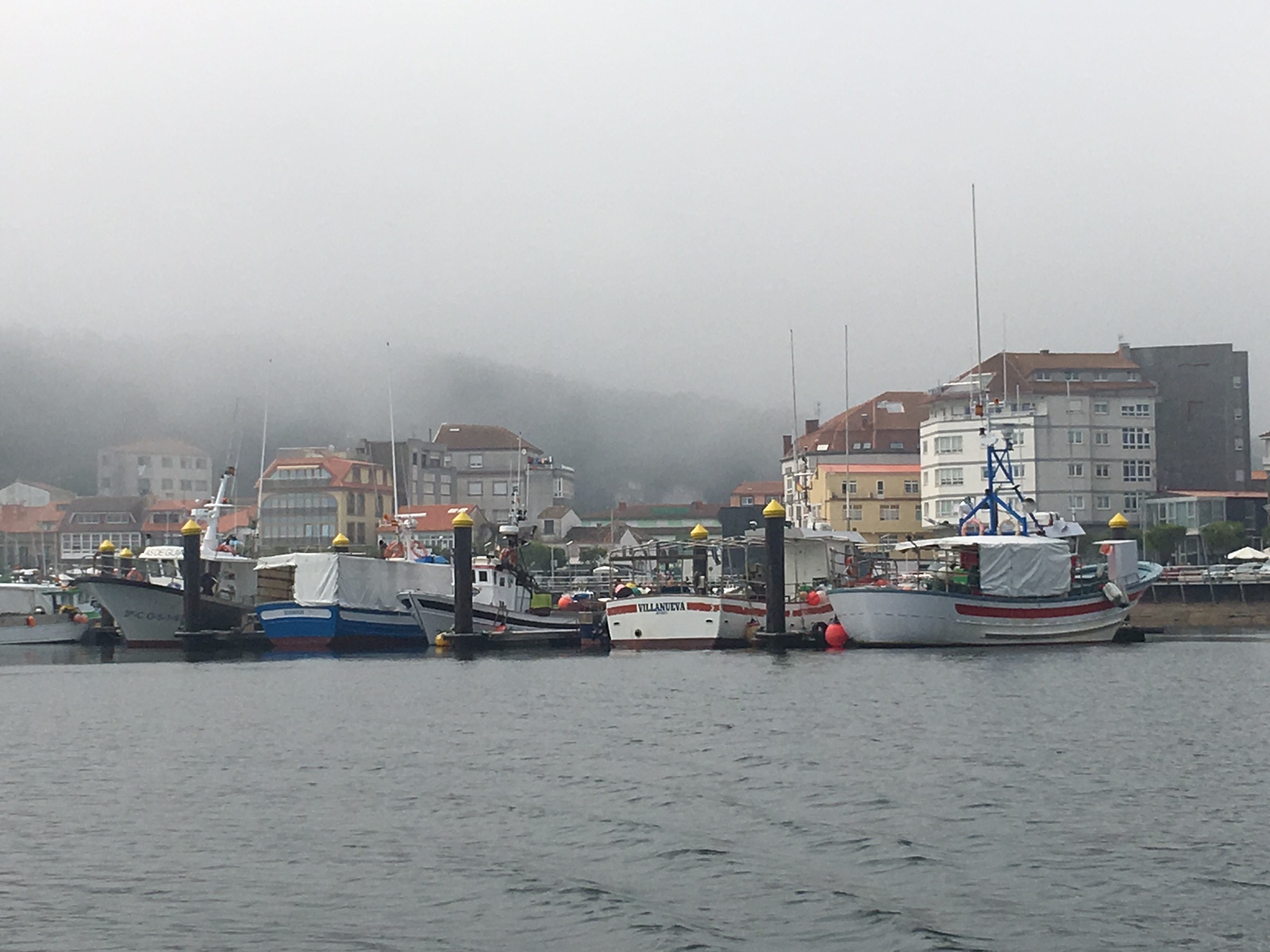
We had decided to go into the Ria de Arousa, which is supposed to be the most beautiful and we anchored up in the bay of Rebeira, right outside the sailing club and finally the sky cleared, the fog was gone and it became a nice evening. Water was still cold either 14 or 17 degrees – discussion between Barolo, Margrethe and North Star. But North Star decided it was 18 and we started to swim in the morning and evenings. It was very refreshing – afterwards.
On the 16th, the fog cleared again around noon and we sailed across the bay to Vila Nova. A small fishermen’s harbour, with a very helpful harbourmaster. Free wine at check in. The sun came out, and Michaela and Marie prepared a great day for us. Wine tasting at Martin Codax and later a visit to Cambados. We saw the wonderful little 16 century church, a tour around town in a ‘tuff tuff’ train and dinner at a great recommendation from the wine castle. The crews from Barolo, Margrethe and North Star were very complementary to the Admiral and deck hand.
Departure on the 17th, from Vila Nova to Isle de Cies with a departure around 12 when the fog cleared and nature prepared a wonderful sunny afternoon and a great sail down to one of the highlights of Galicia – the islands outside the coast. We had chosen Isle de Cies on Barolos recommendation and just after we left Vila Nova, we received the necessary cruising permit and were able to apply for an anchor permit, which is given immediately via the internet. (http://www.iatlanticas.es/) So with all paperwork in place, we sailed through the beautiful surroundings, which is much like the Swedish Archipelago. Arriving around 18, we dived into the crispy clear water, had drinks and dinner and went to bed watching the beautiful full moon and prepared for a rather uneasy night with a few anchor alarms and swells from the great Atlantic Ocean, which was hidden just behind the Island.
Morning broke and the sun brought us back to life and a wonderful sunrise around eight. We hiked around the Island and saw fantastic views and enjoyed the hiking. At least until I came into an unwilling combat with some Spanish youngsters, whom decided that they owned the track. We finished the day around five and wanted to swim before departure, but unfortunately the clear water was not so clear anymore and the weather was in a changing mood, so we sailed to Bayona.
Bayona is worth a stop – calm waters and beautiful location, but go to the Mote Real Marina on your starboard side or anchor in the bay. Much more attractive, as Puerto Deportive is half-finished, with no facilities.
We were sightseeing the town. The old quarters with its narrow streets, the small tavernas and restaurant and the walk in the impressive Castle from 1695. All well worth a visit, before we had a coffee in the hotel in the castle enjoying the stunning views together with the Spanish tourists, as it is the high season for summer vacation. Suddenly time had slipped away and it was late. We hurried back for some farewell drinks with our sailing friends since Guernsey and Cowes. Margrethe with Gitte and Klaus and Barolo with Helle, Heine and Hans. You meet and say farewell, until we meet in another harbor or on the AIS – we all share the love for the sea, the adventure, the camaraderie, and our boats. Margrethe and Barolo are heading towards Gran Canary to cross the Atlantic in December and we will stay in Ria de Vigo until Tuesday morning to get Michaela safely onboard a flight to Copenhagen. So many farewells…
So after a few days of sight seeing and sun bathing in the the Bay of Bayona the alarm clock went of six o’clock on the 23rd, and off we went to Vigo airport to send Michaela on her flight to Copenhagen via Madrid. All worked well, despite it being difficult to say goodbye after so many great days. When we came back to North Star it was not quit the same most of the day.
After fueling with cheap Spanish diesel, we sailed off to Porto hoping for great weather, but got thick fog and plenty of fishing pot floating around – it was a great sail wing on wing, but we had a sharp look out. We arrived into Porvoa de Varzim after 54 nm and Barolo was waiting for us and were very helpful arranging a berth and helping us in very heavy winds. Another nice day although it is strange to sail in fog. Everything goes very slow and noises disappear. Tomorrow we sail to Porto, just 12 nm to meet Benedicte and Carsten for a nice day.
We woke up to another dreadful morning, not the expectations you would have for Spanish summer, but as the thunder and rain disappeared by ten and we got going. Just a two hours sail to meet with Benedicte and Carsten in Marine Douro, which probably is the nicest marina we have visited since we left Copenhagen. A nice box, no swells and very quiet, with a friendly staff. Porto is fantastic, so after a drink, we walked to town to visit one of the many port wine houses on the south side of the Rio Dourne, which runs from deep in northern Spain and give room for many wine yards up through the valley. Cold winters and plenty of rain has given great ripe grapes for port since 1492. It closes at 18:00, so we were only in time for a taste at Churchill’s, which have a nice free deal for sailors from the marina. Back to the marina by five Euro taxi, and then steak from the freezer, which broke two days ago – we were having a feast.

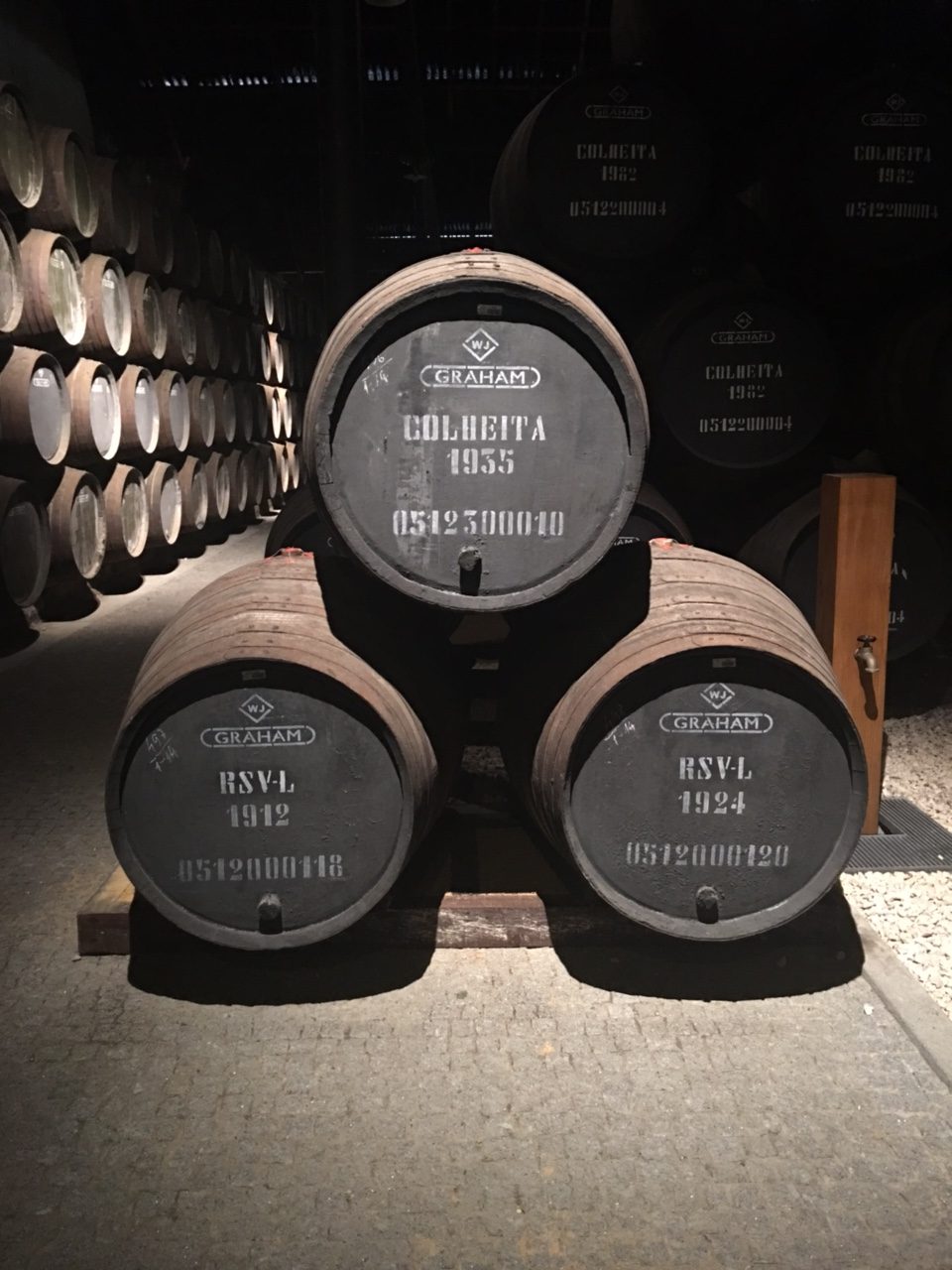
The day after was a wonderful sparkling day with little wind and sun. We visited Grahams, the largest and most inviting port wine house, which gave us a wonderful tour and great tasting. Especially Carsten enjoyed. Later, we went for a leisurely walk and saw some of the highlights in Porto. A very old city, the second largest in Portugal. But very poor and with a remarkable lack of great buildings or anything else. That said, it is cozy and very pleasant with many great fish restaurants. The first Kings of Portugal settled here from 1289. Henriques, a warrior king, who won independence for Portugal and beat the Turks. He is widely celebrated and you will find his statue and picture around the city. In the evening, we went for a walk along the northern riverbank, where there are many restaurants and a very pleasant environment.
Carsten and Benedicte left for southern Spain and then home to Denmark and we awaited Mikael, a great Swedish boat builder, who has done many of the upgrades on our boat during the spring. Our KVH satellite system has not worked since the first upstart and our Locomarine is also very tricky and unstable, so he brought spares and solutions.
On the 27th the plan was to depart, but the morning broke into fog and a funny feeling of not being quite ready to leave Porto. So we postponed departure and enjoyed the incoming sunshine and Porto. It was a great decision. We saw the monastery, the cathedral, the castle and walked in a much more pleasant part of the city, including lunch at Majestics. We ended at Taylors, sipping even more port win, before we headed home. All day we had been transported by Marie’s new taxi friend, which started by taking us to the supermarket then moved us around town – nice and friendly advice.
After a for no reason terrible night, we only left Porto by 07:45 to go south. No fog and no wind, but 20 knots from N/NW after lunch was expected. We hadn’t decided how far we would go today, either Foz 60 nm or Nazare 90 nm. It is difficult to sail in the night, as the many fishing buoys are dangerous for the rudder and propel. We decided for Foz, as the winds were building and we had some difficulty stabilising the sails in the downwind condition and 2-3 m waves.
Just before arrival, the Captain actually did listen to the Admirals advice and did decide to keep the main on a preventer and the cutter on a pole, both strapped down. It was maybe one knot slower, but stable and the slabbing went away. This is going to be our new setup in low down winds. Foz has a very easy entry and plenty of water + 4 meters in low water. It is a great overnight marina.
We left early with the first light at 06:30 with the course set for Cascais, 90 nm away. As usual at the Atlantic coast, swells in the morning, with very light or no winds – and the building after lunch towards 15 to 25 knots. It was finally a beautiful day and we made quick progress towards Capo Roca’s impressive cliffs wavering 150 meters over the ocean surface, where the depths are a few kilometers. We passed through the underwater gorge at Nazarene, going down to 5 kilometers, which gives uneasy seas and reaches down to the impressive Roca. Shortly after we took down the sails as the wind died 1 nm south of the Roca, we reached an acceleration zone and the wind went quickly up to 35 knots. It became dark and the waves were building. Again our friends on Margrethe and Barolo were looking out for us and guided us outside the worst fishing buoys and we continued 5 nm south of Cascais, before turning back and in towards the shore, with protection for the waves and the wind. At times it was violent, but Marie and I are now a very solid team and North Star is taking well care of us – so it was really another good challenge. At 23.15, we were well anchored in the outskirts of the bay, in 10 meters of water and safely away from the dark shadows with anchor lights.
This was the start of our stay in ‘little paradise’ as Antonio, a good friend of ours in Lisbon, labels Portugal. Long lazy days, with sun and some refreshing wind, reversing between a day or two in the marina at 59 € a night and anchoring in the bay at no cost except the usage of generator and water maker, to provide us with plenty of water and electricity. North Star is keeping up well, although appearances are less stellar, than when we left Denmark, where Niels, Morten and Dennis had done a marvelous job at making here look her best. We probably need a larger engine for the dinghy, as Marie gets very wet in the swells, when we sail into them and not over, but life is very good.
While we were lazy and enjoying the Spanish summer, Marie is the perfect tourist guide taking us around in Cascais, Sintra and Lisbon. Cascais is very close to a Portuguese Rivera town with large houses and some history. It is recommended to see some of the old houses, the marine museum and the old town. It is a charming and very pleasant place and the people are very helpful. In Galicia, English was not spoken, but since we arrived in Portugal, nearly everyone we met have a fine command of English.
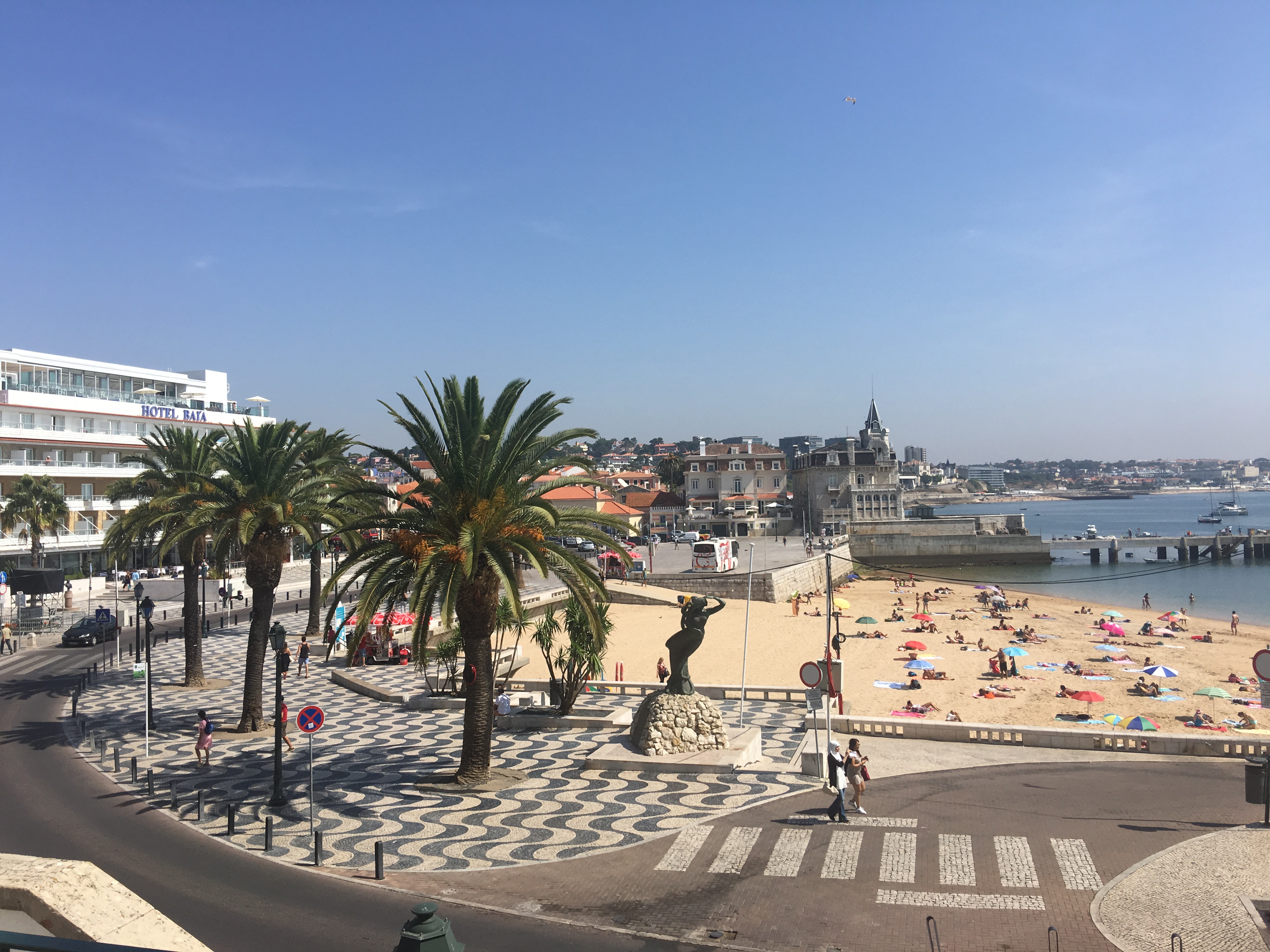
Antonio invited us on a great evening, first drinks on the aft deck of North Star, then drinks at a bar, and then a local restaurant 5 km outside Cascais, which prepared the best meal we have had since leaving Denmark.
Lisboa is wonderful, especially the Joronimus Monastery from around 1540 is a must see. Also the Arab quarters and the old tramps, are well worth a visit. But be aware of number 15, it is known for pocket thief – we were told, after the fact! Yes, they succeeded to steal my wallet from my back pack. No harm was done, except all the hassle and the part about feeling really stupid.
On our last day touring Lisboa, we reached a state of overload and we are now officially the best guides on European cathedrals, but with no need for seeing more of them.
We also spent a pleasant day in Sintra, taking the train up into the low mountains behind Lisboa into the playground of the kings and queens of Portugal. Sintra was where royalty spent June to October from 1440 until 1910, where the last King was assassinated and the republic arrived to Portugal. It is a beautiful place with museums and six or seven very large mansions and palaces – but even on a Monday, very touristic. Some say a must see, probably, but be aware of the hordes of buses….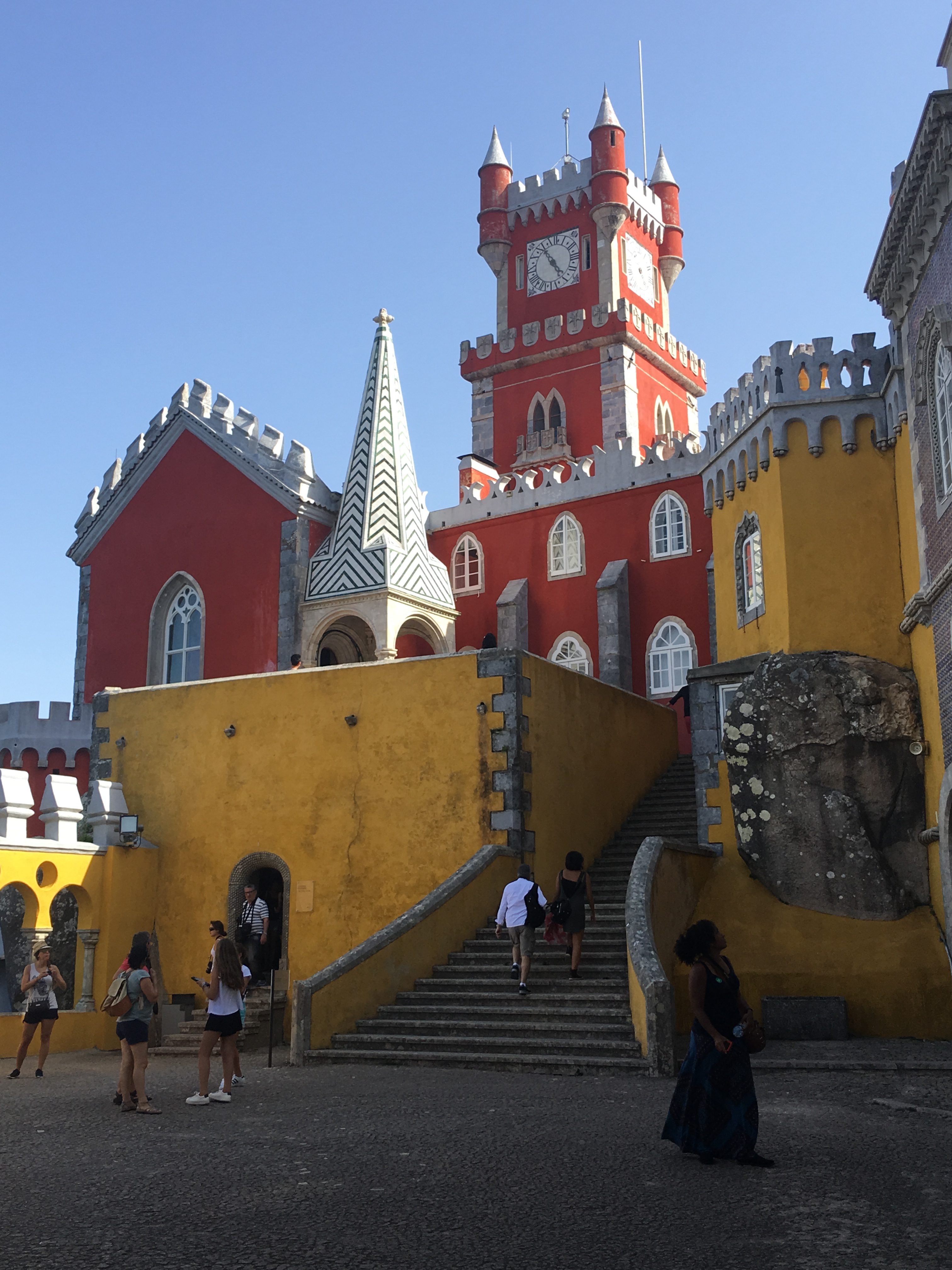
Lisboa and Cascais were fantastic and very enjoyable. It was the first time during our journey that we hit the warm southern summer, we had been looking forward to for so long. We have now been sailing since June 24th and tomorrow we are heading to Copenhagen to work, visit friends and see the kids. It feels weird to leave North Star behind, and we are looking forward to returning to this very different life compared to the one we had grown accustom to. It is very different, more social and leisurely of course, but also in so many ways a challenge, as the sea and the weather never give you a break and you can only relax for a short time, before it comes back to surprise you. As long as you work hard on being well prepared, listen to the advice you get along the way, maintain the boat, and sail conservatively, it will all be smooth sailing. But if not, we have seen many examples of boats, which have been less fortunate than us and North Star. We have also realised that we need to move to the other side of the rainbow to find the adventure and the challenge. The further we sail from good old civilised Europe, the greater the challenge and that is where we will be heading.
Ten days later, we left on a wonderful morning from Cascais and Marie immediately found her spot in front of the mast and enjoyed the solitude of being back on the boat. When she returned from Copenhagen, she expressed what we both felt – nice to be home again. And shortly after this statement we signed up for ARC 2017 via Cap Verde..
Just using the last light, we entered into Sines – a huge pier and behind there an industrial harbour and behind again a small fishing harbour and tucked away in a corner a small but very pleasant marina. Fuel and water were plentiful and a couple of restaurants were ten minutes away on bikes, but uphill. Sines is a nice little fishing town with a few tourist and a fortress.
At the first light we continued towards Sagres our next longer stop, hoping for great conditions to round Cape St. Vincent and spent a few days on anchor in the bay of Sagres. Be aware when rounding Cape St. Vincent – as with all these Capes the wind and currents act up. When coming into Sagres and turning on the engine again after a long sail the power was nearly gone. Fortunately, it is not a big challenge when you anchor in a bay, more an issue when entering a small and narrow harbour. Anyway, a few phone calls to Dennis and Erik set us off in the right direction. Especially Dennis from KKE, our local mechanic in Denmark, is extremely helpful and skilled. He is always willing to go that extra mile, which is so important if you are alone in strange waters somewhere in the world. Soon we changed all fuel filters, inspected the prop and a few other details and we were up and running again. Thanks for the help!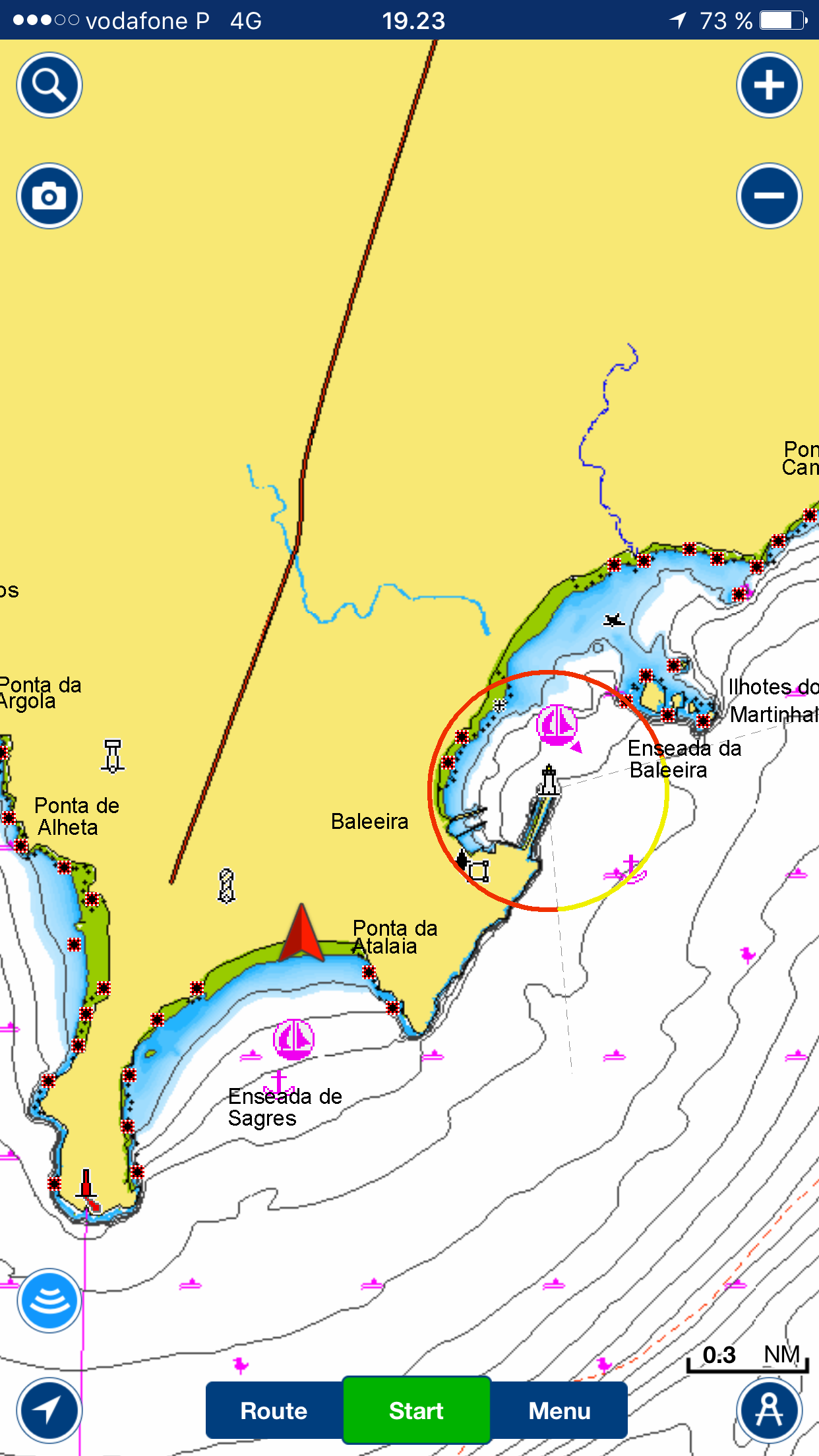
It is of course also a reminder of the sensitivity of the new common rail engines towards fuel supply – not a real problem in the Med if you are cautious, but when you arrive at more distant and isolated shores, fuel quality has a tendency to deter and then a rigorous regime of filtering needs to be used. We have chosen to install double Racor filter with a switch over function and a cleaning and polishing system, which allows us to move the fuel between our two tanks via other Racor filters. It is not 100% proof, but probably the best you can do.
Sagres was a highlight. Anchoring in a solemn bay in sun and wind during endless days. Followed by an early evening dinghy ride to the lonely fish restaurant at the beach, spending time watching the sun rise and set and swimming in the sea. No you are right – not much to do, and that is exactly the point. We were told that you had to check into the nearest harbor, but we did not and we were never contacted, before we checked into Lagos 30 nm east of Sagres.
After four days, the wind started to come back and we had to go to Lagos, as we were participating in a conference in Athens with YPO.
Isle of white via Bay of Biscay to La Coruna
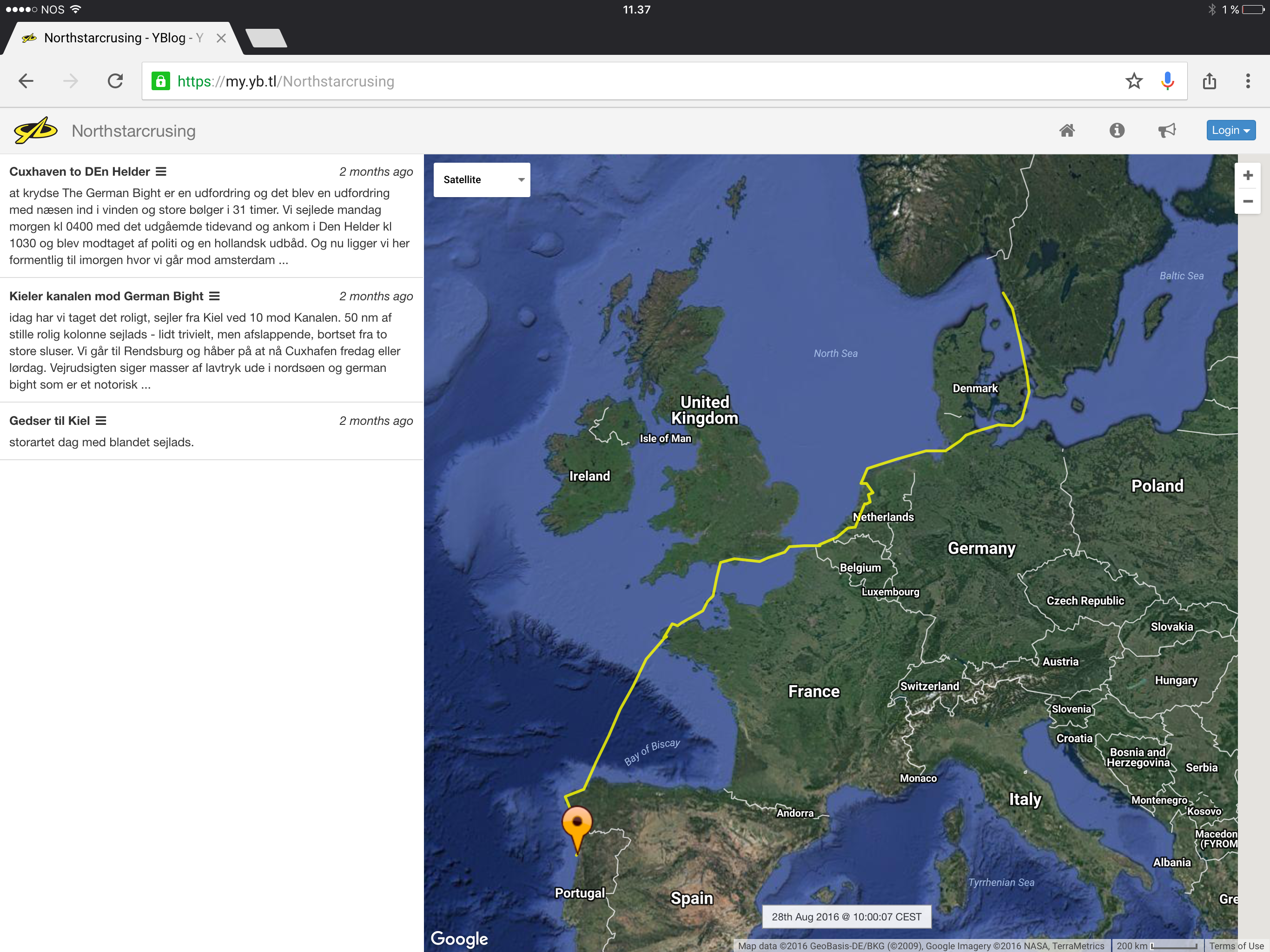 In a breeze we left Cowes around noon on the 25th towards Studland Bay, which turned out to be a great recommendation from Belinda and Colin. A beautiful sail until we reached the famous Needles, where the wind accelerated to +30 knots on the nose and the swells quickly became uncomfortable. But arriving in the bay with the last light, meeting a couple of other boats and slowly calming down, making dinner and enjoying the moonlight on the hook – not bad at all!
In a breeze we left Cowes around noon on the 25th towards Studland Bay, which turned out to be a great recommendation from Belinda and Colin. A beautiful sail until we reached the famous Needles, where the wind accelerated to +30 knots on the nose and the swells quickly became uncomfortable. But arriving in the bay with the last light, meeting a couple of other boats and slowly calming down, making dinner and enjoying the moonlight on the hook – not bad at all!
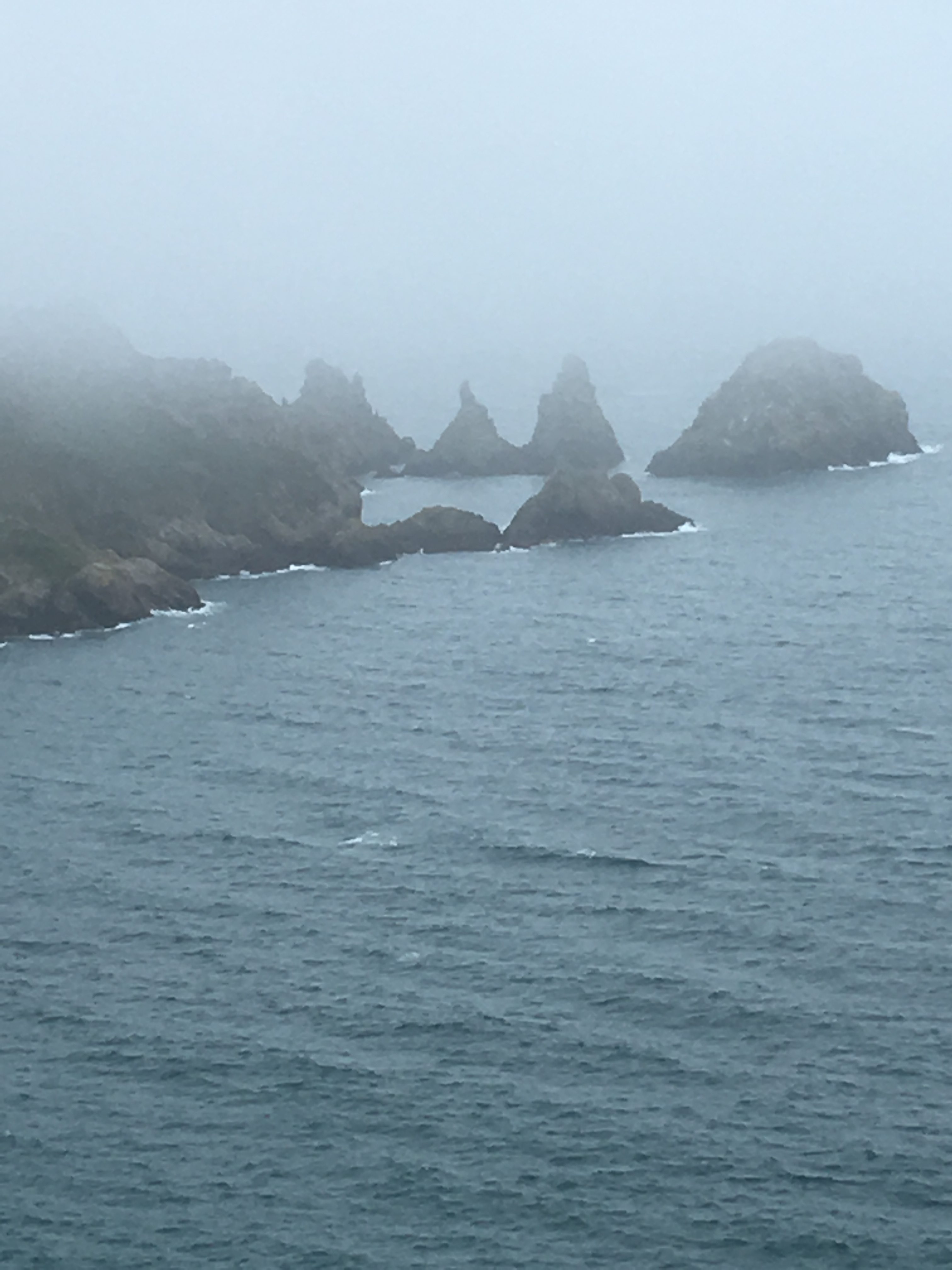
In the morning of the 26th, the course was set for Guernsey 110 nm away, and if you read about it in the Sailing Guide – it is a dangerous place you need to approach with care. But it was a fine day, with calm winds and we hit the different tidal streams reasonably – even though it was hard to keep course and speed when 5 knots of tide hit our port side for three hours. But we made it and passed Alderney, with an 8 knot tide with us and reflecting on the effects on the boat, if it had been against – and we arrived into Saint Peter Port at Guernsey early evening the 26th of July. There was a line up, but we were directed to a mooring in the outer harbor, as boat number four from the floating dock. Not bad, but tricky and demanding for any boat.
This was Marie’s destination of choice and I enjoyed the chance to bunk diesel at 3 DKK – so we topped up North Star. But as you could expect with Marie, the next four days were very quickly filled up with tours of the island and visit to the many attractions. It is a beautiful island with plenty of rocky coast, as protection against the rough sea which surrounds. We did some hiking in the changing weather coming in on the back side of just another low in the English Channel. Of course the hiking had a purpose, we were walking in the rain and wind to get to five o’clock tea in a house in a beautiful small bay right at the ocean, Moulin Huet Bay Tearoom. We also saw Victor Hugo’s house and of course gardens and museums. It was a pleasant stay, but the weather was very Atlantic and I believe the reason for Guernsey making their local “Blue Bottle Gin”.
After four days, we sailed off towards Brest, with a short stop in Ropscoff where we arrived just a few hours ahead of an another gale, which kept us in Brest for way too long. A learn
ing was that if we had continued, we would have enjoyed a safe and comfortable journey – but at the time the forecast was conflicting, and we choose the safer option. That is the right choice and we would do it again, but five d ays in Brest was a little long, because on the other side of the Bay of Biscay summer was waiting! Instead we were stuck in wind and rain, but spending a great time with our friends from S/Y Margrethe and S/Y Barolo. The latter is a Danish boat we met, as we were fuelling in Guernsey and it turned out we would, as so often seen before, join forces for the next six weeks.
ays in Brest was a little long, because on the other side of the Bay of Biscay summer was waiting! Instead we were stuck in wind and rain, but spending a great time with our friends from S/Y Margrethe and S/Y Barolo. The latter is a Danish boat we met, as we were fuelling in Guernsey and it turned out we would, as so often seen before, join forces for the next six weeks.
We were reading the weather forecast several times a day and talked to the locals and among ourselves, looking for the window, which could take us to the other side. The last couple of days the weather improved. But because of our choice to cross from Brest and not from Falmouth, we were forced to cross through a wave zone with very conflicting waves, where the Atlantic bottom raised from 4000 meters to 100 meters and this was known for large swells after gales. As cautious and inexperienced sailors, we thought it prudent to wait. On Thursday morning, when the swell conditions for the first 90 nm miles was forecasted to be between 2-3 meters and not 4-7 meters, we left with the early tide. Barolo first, North Star second and Margrethe, right after.
On North Star, the crew was Michaela, Marie and I – an all family crew. Kristian had to leave because of the commitments at home and we missed him. This crossing over the Bay of Biscay is well known for being very challenging and for some, dangerous as you run across and risk being caught short on a lee shore, without many option to get away. So it is safe to say, the crew was focused on the task at hand and were very well prepared.
The first day was long as the swell was of higher than forecasted and the wind was not strong enough to keep us sailing through the waves. So we motor-sailed and Michaela was slightly hit by seasickness for some hours. But towards the end of the afternoon the wind increased and we sailed through the night and the swells became manageable. When the stars and moon came up it helped us see. It was a fantastic experience. When the morning came the wind disappeared again and the Biscay turned into a mirror. We used the motor as the last forecast we received before we left Brest, advised gale force easterly to south westerly Saturday afternoon the last 50 nm before arriving Coruna. Our ability to receive forecasts underway, disappeared as our satellite connections broke down right afte leaving Brest. So we were in a hurry, hence the motoring through the mirror ocean.
Around 11 o’clock accordng to the logbook, Marie observed a Blue whale and its baby just 50 m ahead of us – a little too close, but they passed right in front of us. Shortly after, our depth gauge moved from indefinite depth – more than 1000 meters to 3-4 meter. Yes, we don’t know, but it was probably a whale passing direct under us and then I turned around to look back and right behind us 4-5 of them were passing. A little scary – no quite a lot… but they are beautiful animals and to see them this close in their environment is nothing short of a dream come through.
As we pushed on and the boat settled into routines with watch, food and sleep, the wind came back and this time from North East. So with a little course correction to optimize our speed with the wind, we sailed through the night at speeds over 8 knots, even with slightly reefed sails. This trip, together with the German Bight trip has convinced Marie and I that North Star is more than capable to take care of us on our journey ahead. That is the one thing you do not want to doubt, when you are out here in the middle of the ocean, somewhat left to your survival efforts.
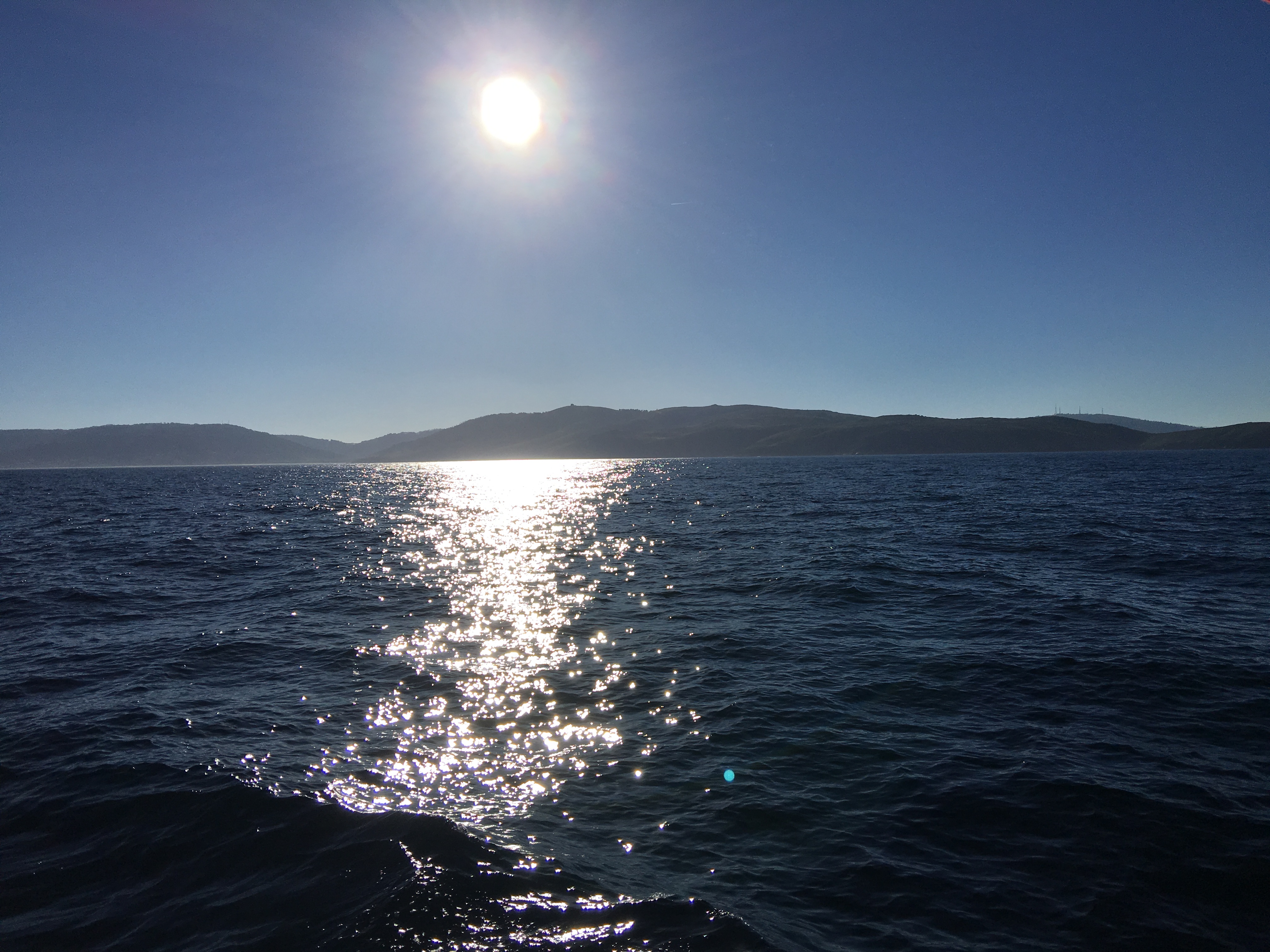 The second night I took the dog watch from four and had another fantastic night watching the Milky way, more shooting stars than ever before, and more importantly I spent most of this watch with our youngest daughter, Michaela.
The second night I took the dog watch from four and had another fantastic night watching the Milky way, more shooting stars than ever before, and more importantly I spent most of this watch with our youngest daughter, Michaela.
Early morning, we did start to see the deadly coast of northern Spain, Coast a la Morte and we just reached into cover from the increasing easterly on our way into Coruna. We were tired and we were proud – we did it. As a family, missing Alexandra who had to work, we crossed the Bay of Biscay. I wrote on FB when the phones came to life, reflecting the proudness and sense of accomplishment:
Klokken er fem om morgenen og en fantastisk tur over Biscayen er ved at være slut. Vi er vel inde ved 0830 tiden. Det er stjerneklart med en del stjerneskud og vinden er mellem 20 og 25 knob. Båden skyder 8-9 knob gennem vandet og de første fyr er dukket frem af mørket. Det er magisk og en fantastisk fornemmelse af at nu er vi for alvor på vej og har bestået prøven gennem GermanBight og nu næsten Biscayen. At 10:15 on the 5th of August, we were just before the entrance and we stopped a wonderful sail and dropped into the still cold, but much warmer water and enjoyed that we finally had reached summer and Spain – we thought… Barolo and Margrethe came in later during the dy and both of them met the developing gale, but arrived safely.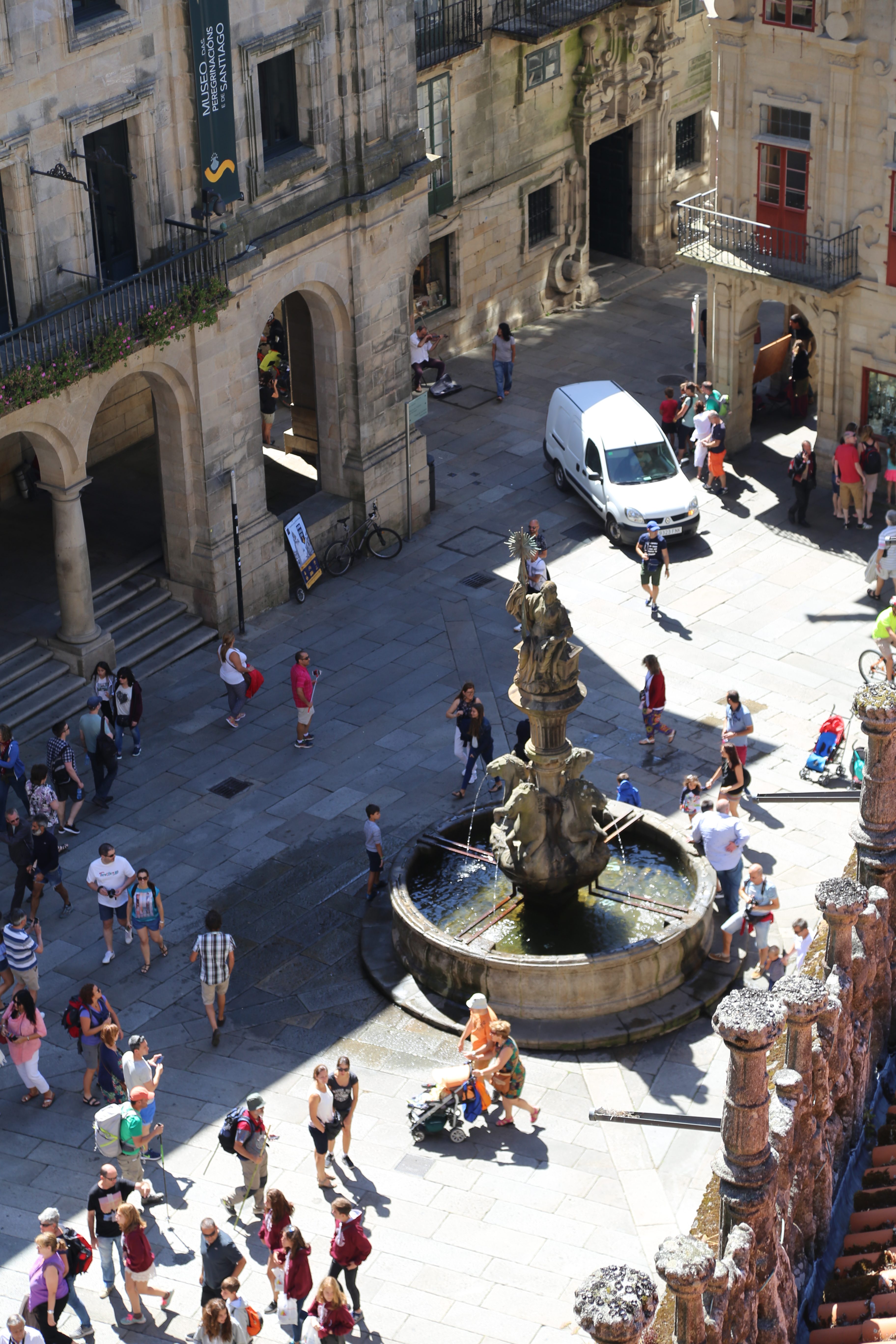
Coruna is exactly the kind of town you would like to meet when you first arrive to this northern part of a very diverse country. The marina is right in the city, very close to the large city square, which is in many ways the center of the town. You can eat tapas every night for endless nights and never need to come back to the same restaurant. For sailors there are superm arkets close to the marina, data phone cards on the pedestrian street and a very helpful harbor master, who even spoke a little bit of English. We spent six days there and relaxed, travelled around and visited San Sebastian de Compostello.
arkets close to the marina, data phone cards on the pedestrian street and a very helpful harbor master, who even spoke a little bit of English. We spent six days there and relaxed, travelled around and visited San Sebastian de Compostello.
This is a must. Only a one-hour train ride and you arrive right in the city enter and a short walk from the cathedral, which is breathtaking.





